Tim Roberts's Blog
August 20, 2024
The Best Fiction Books About Travel and Adventure
 Photo by Cottonbro Studio /*! elementor - v3.23.0 - 05-08-2024 */.elementor-widget-text-editor.elementor-drop-cap-view-stacked .elementor-drop-cap{background-color:#69727d;color:#fff}.elementor-widget-text-editor.elementor-drop-cap-view-framed .elementor-drop-cap{color:#69727d;border:3px solid;background-color:transparent}.elementor-widget-text-editor:not(.elementor-drop-cap-view-default) .elementor-drop-cap{margin-top:8px}.elementor-widget-text-editor:not(.elementor-drop-cap-view-default) .elementor-drop-cap-letter{width:1em;height:1em}.elementor-widget-text-editor .elementor-drop-cap{float:left;text-align:center;line-height:1;font-size:50px}.elementor-widget-text-editor .elementor-drop-cap-letter{display:inline-block}
Photo by Cottonbro Studio /*! elementor - v3.23.0 - 05-08-2024 */.elementor-widget-text-editor.elementor-drop-cap-view-stacked .elementor-drop-cap{background-color:#69727d;color:#fff}.elementor-widget-text-editor.elementor-drop-cap-view-framed .elementor-drop-cap{color:#69727d;border:3px solid;background-color:transparent}.elementor-widget-text-editor:not(.elementor-drop-cap-view-default) .elementor-drop-cap{margin-top:8px}.elementor-widget-text-editor:not(.elementor-drop-cap-view-default) .elementor-drop-cap-letter{width:1em;height:1em}.elementor-widget-text-editor .elementor-drop-cap{float:left;text-align:center;line-height:1;font-size:50px}.elementor-widget-text-editor .elementor-drop-cap-letter{display:inline-block} As you may be aware, there are two things that get me up in the morning (Well, three if you count a hot frothy steaming cup of coffee):
Travel
Writing
So, this post is a hit close to home as I combine the two passions; the best fiction books about travel and adventure. Travel literature has the unique ability to transport us to distant lands, learn about parts of the world and cultures and inspire us to explore abroad. It may come as no surprise that the first books that got me reading as a little tacker were the Tintin graphic novel series by Herge. For those familiar with Tintin, just about every book is set in a different country. As such, Tintin was my first introduction to the wider world which I found awe-inspiring and (unknowingly at the time) set me on the course for where I’m at today.
Since Tintin, I’ve been drawn to many stories taking place in faraway places, and here are ten of my favourite novels about travel, each offering a distinct and unforgettable journey.
10 Best Fiction Books About Travel and Adventure 1. The Beach, by Alex Garland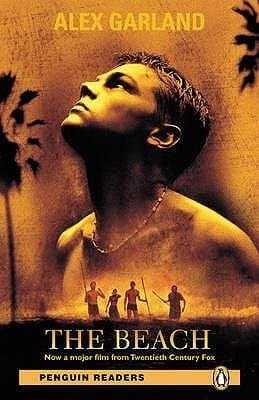
I remember when I read Alex Garland’s “The Beach”, around the time it came out, and I was about the same age as the main character, Richard. As a result, it compelled me to travel to Thailand and to the Maya Bay in the Phi Phi islands, the setting for The Beach in the movie starring Leonardo Dicaprio. Maya Bay had been put on the map and was already attracting a large number of tourists there. Still, I have fond memories as I learned to scuba dive in the bay which was full of colourful corals and all sorts of sea creatures. I also did the cliff jump from one of the limestone cliffs – 20 metres which might not sound high but when you’re up there looking down, it’s a long way! In fact, it was so far that when I hit the water I gave myself an enema!
Anyhow, about the novel. One of the best fiction books about travel delves into the darker side of paradise. The story follows the aforementioned Richard, a young backpacker who discovers a hidden, idyllic beach community in Thailand. As he becomes entrenched in this seemingly utopian society, he uncovers its underlying tensions and moral ambiguities. The ending differs somewhat from the movie and is much darker, and better in my opinion.
“The Beach” is Garland’s first novel. Published in 1996, it quickly became a bestseller and established Garland as a prominent voice in contemporary fiction. And today, he is a prominent Hollywood movie director of the likes of Deus Ex Machina and Annihilation.
2. The Alchemist, by Paulo Coelho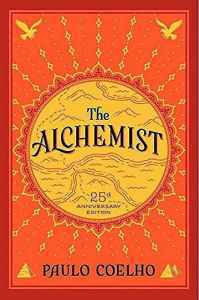
I remember my girlfriend (at the time) telling me to read this after discovering I was a believer in the law of attraction. Paulo Coelho’s “The Alchemist” is a mystical and allegorical tale about a young Andalusian shepherd named Santiago who dreams of discovering a hidden treasure in the Egyptian pyramids. As he embarks on this life-changing journey, Santiago learns profound lessons about following one’s dreams, listening to the heart, and finding personal legend, which isn’t where he expects it.
Coelho’s simple yet profound narrative weaves elements of adventure, spirituality, and wisdom. While you probably won’t relate to the journey across the Sahara that he embarks on, you will certainly identify with the self-discovery and transformation that solo-travel delivers. For myself, it made me realise that I was searching for outside pleasures for validation (including that girlfriend), whereas I needed to look within myself.
3. Drunk on a Plane, by Zane Mitchell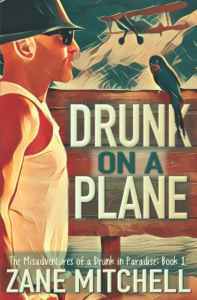
Drunk on a Plane is the first in the highly entertaining series, Drunk in Paradise. It follows Daniel T. Drunk (yes, real name) as he goes on his honeymoon in the Caribbean, yet without his bride-to-be. This is because just before the wedding he caught her in an uncompromising position with her ex-boyfriend. In a bid to heal himself with some rebound action, he heads to paradise alone ready to blow off some steam.
Only problem is, a dead body shows up in his resort hotel room. And just about every time he thinks he’s gonna get laid, something else tragic happens, all related to the murder which he has become a prime suspect in.
This Lad-lit novel is a classic crime comedy that reminds you that although you may have high and wild expectations for your next trip, things don’t always go as planned, yet can provide an entirely different kind of reward.
4. The Adventures of Tintin, by Herge.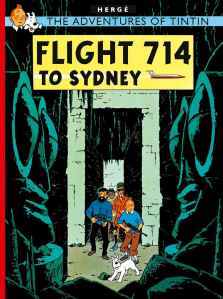
I have to include Tintin – It got me both reading and curious about the world. The graphic novel series was created by Belgian cartoonist Hergé. First appearing in 1929, the series follows the intrepid young journalist Tintin as he embarks on thrilling adventures around the world, often accompanied by his loyal dog Snowy. From uncovering ancient secrets to thwarting criminal masterminds, Tintin’s journeys take him to exotic locations, where he encounters a colourful cast of characters, including the irritable Captain Haddock and the absent-minded Professor Calculus. With its blend of mystery, humour, and action, The Adventures of Tintin has captivated readers of all ages for decades, becoming a beloved cornerstone of European comic literature.
5. Mango Bob, by Bill H. Myers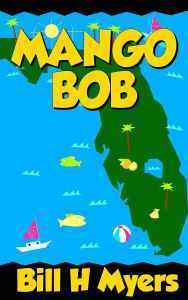
Got to include a good road trip tale for the best fiction books about travel—in the first book of the Mango Bob series, Walker’s life has taken a nosedive—he’s just lost his job, his wife has filed for divorce, and he’s now living in a tent by the river. But ever the resourceful one, Walker trades his truck for a motorhome dubbed “the Love Bus” and agrees to drive it cross-country to Englewood, Florida, to deliver a cat named Mango Bob to a woman he’s never met.
What should be daily simple turns into a complicated journey involving an unsolved murder, the Mexican mafia, and half a million in missing gold coins.Throw in a trigger-happy grandma, a team of bumbling burglars, a repo man, a hot chick with a kayak, and you’ve got a wild, rollicking travel adventure through the Sunshine State.
6. Around the World in 80 Days, by Jules Verne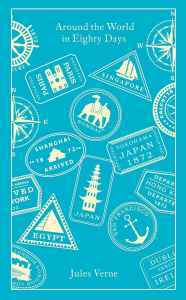
Gotta include this classic; Jules Verne’s timeless adventure novel about travel, “Around the World in 80 Days” follows the eccentric Englishman Phileas Fogg and his loyal valet Passepartout as they attempt to circumnavigate the globe in 80 days. Set in the late 19th century, the novel is a thrilling tale of innovation, perseverance, and cultural exploration. One of the original and classic travel adventure tales, Verne’s imaginative narrative and vibrant characters make this a timeless tale of adventure and human ingenuity.
7. The Secret Life of Walter Mitty, by James Thurber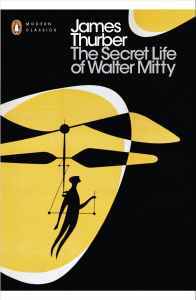
One of my personal favourite fiction books about travel and adventure, James Thurber’s short story “The Secret Life of Walter Mitty” explores the imaginative escapades of its titular character, a mild-mannered man who frequently escapes his mundane reality through vivid daydreams. However, this is a rare occasion where I think the movie starring Ben Stiller is better than the book.
In the movie, Walter, through a set of circumstances at his work, is compelled to take a leap of faith, and thus take the adventures from out of his head and into the real world. The result is a global adventure and one he will never forget. The Secret Life of Walter Mitty delivers an important message: stop daydreaming and take that leap—book the flight!
8. Paradise Island, by Sam Golbach and Colby Brook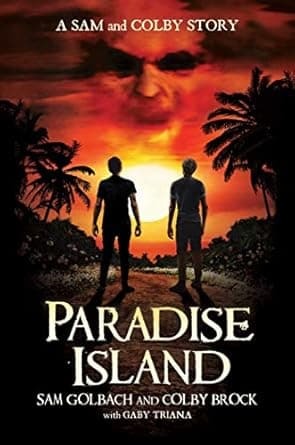
You may be aware that I am a huge fan of the dark side (not Star Wars – I’m team Skywalker). Whether it be dark comedy or dark tourism, there’s something about the dark side that lures me in. And Paradise Island did just that. It tells the contemporary story of ghost-hunting Youtubers Sam and Colby, who get a not-so-healthy dose of, be careful what you wish for, when they embark on their dream vacation to Hawaii.
Sam and Colby’s dream vacation in paradise takes a chilling turn when Trey, an old acquaintance, insists they visit the legendary Na Pali Coast before they leave. Trey, it turns out, has been living at the infamous Belle Estate, a sprawling mansion owned by an eccentric widow who locals whisper is a witch. The mansion’s remote location on Kauai’s North Shore and Trey’s bizarre relationship with a woman old enough to be his grandmother are only the beginning of the strange events. The Belle Estate seems to cast a haunting spell over all who enter, with a dark, shadowy presence lurking around the grounds. When an unexpected twist forces them to stay the night, Sam and Colby find themselves facing the most terrifying ordeal of their lives. An unsettling and refreshingly disturbing read about what can go drastically wrong when travelling.
9. Travels with my Aunt, by Graeme Greene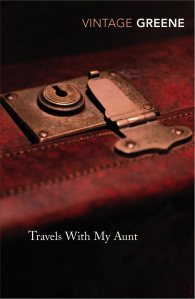
This best fiction books about travel list wouldn’t be complete without an inclusion from the master of travel adventure fiction, Graeme Greene. While he has plenty of books worthy of this list, I particularly like Travels with my Aunt because it takes a dull character out of his monotonous life and opens his eyes up to the world—Similar themes to Walter Mitty.
It tells the story of Henry Pulling, a recently retired bank manager, who reconnects with his spirited Aunt Augusta at his mother’s funeral after more than fifty years apart. It doesn’t take long for Aunt Augusta to convince Henry to leave behind Southwood to embark on a journey with her. From Brighton to Paris, Istanbul to Paraguay, Henry is swept into a world far removed from his quiet suburban life. Alongside his unconventional aunt, he mingles with hippies, war criminals, and CIA agents, smokes pot, and flouts currency regulations, discovering a vibrant life he never knew he was missing. This is how retirement should be lived!
10. Shantaram, by Gregory David Roberts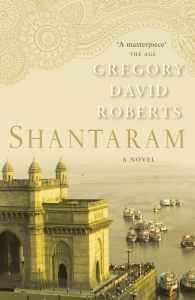
While this one was a little long for my liking, the writing, especially Roberts’ talent to describe a place, people and their culture, earns a place on this list. Shantaram by Gregory David Roberts is a sweeping epic that follows the life of Lin, an Australian convict who escapes from a maximum-security prison and finds himself in the vibrant, chaotic streets of Bombay. Based loosely on the author’s own experiences, the novel delves deep into the underworld of India, as Lin navigates the city’s slums, forms deep bonds with its residents, and becomes entangled in the complexities of crime, love, and redemption.
Through Lin’s eyes, readers experience the beauty and brutality of Bombay, from its bustling markets to the heartache of poverty, all while exploring profound themes of forgiveness, identity, and the search for meaning in a turbulent world. Richly detailed and emotionally charged, Shantaram is a powerful tale of survival and transformation.
 The Cartagena Cartel, by T.C. Roberts
The Cartagena Cartel, by T.C. Roberts 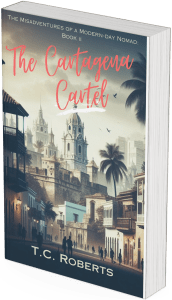
Yes, that’s right—I’m including my own book here as one of the best fiction books about travel. Why? Because I can. That’s the beauty of writing a blog—you can shamelessly plug yourself. But seriously, one day this could be a classic tale of travel… gone wrong!
Anyhow, the story follows the worst traveller in the world, Archie Flynn as he embarks on his first solo trip to Colombia in a bid to reinvent himself as one of those so-called digital nomads. Of course, that plan goes to shit when, through a set of unfortunate events, he finds himself penniless in a foreign country. And then, get this – he has the genius idea of helping the local coke-pushers move their product throughout the party-loving tourist community of Cartagena just to make a quick buck (and perhaps impress the gorgeous Pocahontas). And how do you think that turns out? Before long, Archie’s in way over his head and has to get the hell of dodge-central the cartel, corrupt police and angry tourists make his first trip his last.
The Cartagena Cartel is the second book in the series, The Misadventures of a Modern-Day Nomad. You can read the first in the series, Highly Flawed Individual here.
The post The Best Fiction Books About Travel and Adventure appeared first on Tim Roberts.
May 20, 2024
Dark Tourism: Learning Through Humans Worst Atrocities
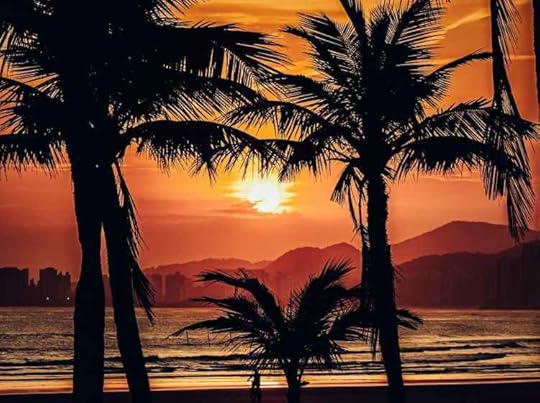 Photo credit Pexels-Andersonmartins Retratos /*! elementor - v3.21.0 - 08-05-2024 */.elementor-widget-text-editor.elementor-drop-cap-view-stacked .elementor-drop-cap{background-color:#69727d;color:#fff}.elementor-widget-text-editor.elementor-drop-cap-view-framed .elementor-drop-cap{color:#69727d;border:3px solid;background-color:transparent}.elementor-widget-text-editor:not(.elementor-drop-cap-view-default) .elementor-drop-cap{margin-top:8px}.elementor-widget-text-editor:not(.elementor-drop-cap-view-default) .elementor-drop-cap-letter{width:1em;height:1em}.elementor-widget-text-editor .elementor-drop-cap{float:left;text-align:center;line-height:1;font-size:50px}.elementor-widget-text-editor .elementor-drop-cap-letter{display:inline-block}
Photo credit Pexels-Andersonmartins Retratos /*! elementor - v3.21.0 - 08-05-2024 */.elementor-widget-text-editor.elementor-drop-cap-view-stacked .elementor-drop-cap{background-color:#69727d;color:#fff}.elementor-widget-text-editor.elementor-drop-cap-view-framed .elementor-drop-cap{color:#69727d;border:3px solid;background-color:transparent}.elementor-widget-text-editor:not(.elementor-drop-cap-view-default) .elementor-drop-cap{margin-top:8px}.elementor-widget-text-editor:not(.elementor-drop-cap-view-default) .elementor-drop-cap-letter{width:1em;height:1em}.elementor-widget-text-editor .elementor-drop-cap{float:left;text-align:center;line-height:1;font-size:50px}.elementor-widget-text-editor .elementor-drop-cap-letter{display:inline-block} People often ask me why I visit so many dark tourism destinations. There are two essential reasons:
To better understand and learn from humanity’s mistakes.
To put things in perspective and be grateful for how good I have it.
While it can be a daunting and often harrowing experience visiting the dark tourism sites I have as a digital nomad, exploring these famous museums and sites around the world from a dark tourism perspective offers a unique lens through which to delve into history, culture, and human experiences. From somber reminders of past tragedies to thought-provoking exhibitions, there’s a wealth of material to cover. Whether it’s visiting places like the Hiroshima Peace Memorial in Japan, the Auschwitz-Birkenau concentration camp in Poland, or the 9/11 Memorial & Museum in New York City, each site offers profound insights into our collective past.
In this post, we will look at dark tourism sites I have visited, which include:
The Killing Fields – Phnom Penh, Cambodia
Tuol Sleng Genocide Museum – Phnom Penh, Cambodia
District Six Museum – Cape Town, South Africa
The Apartheid Museum, Johannesburg, South Africa
War Museum – Ho Chi Minh, Vietnam
Old Slave Market – Zanzibar, Tanzania
And dark tourism destinations I have not, but which are on my list:
Auschwitz–Birkenau concentration camp, Poland
Port Arthur – Tasmania, Australia
The United States National Slavery Museum – Virginia, USA
Kura Hulanda Museum – Willemstad, Curacao
Hiroshima Peace Memorial – Hiroshima, Japan
9/11 Memorial and Museum – New York City, USA
Cambodia's Dark Toursim Tuol Sleng Genocide Museum - Phnom Penh, Cambodia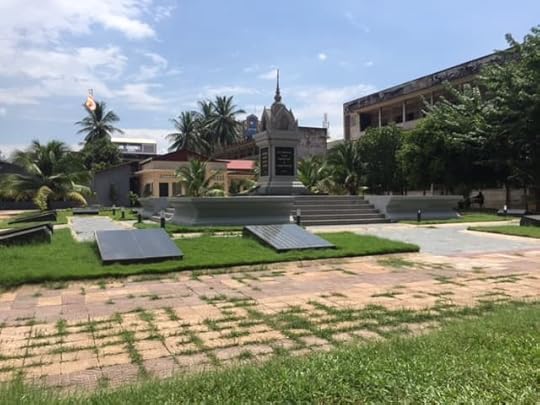
I went to Cambodia on a volunteer trip where I raised and donated money towards building homes for direct descendents of victims of the Khmer Rouge civil war. Or, more accurately, genocide. Part of the volunteer program involved visiting some historical dark tourism sites to get a better understanding of what this country and its people went through. And boy was it an eye-opener.
Visiting the Tuol Sleng Genocide Museum in Phnom Penh, Cambodia, is an emotionally profound journey into the heart of the Khmer Rouge regime’s reign of terror. Once a high school, the site was transformed into a notorious interrogation and torture center during the late 1970s. Today, it stands as a haunting memorial to the victims of Cambodia’s genocide, offering a sobering glimpse into the country’s tragic past.
As you step through the gates of Tuol Sleng, they are immediately confronted with the stark realities of the Khmer Rouge’s brutality. You are guided by an audio guided tour explaining each room. The museum’s solemn halls are lined with rows of prison cells, each one a silent witness to the countless lives that were lost within these walls. Photographs of the victims, many of whom were tortured and executed on-site, serve as a haunting reminder of the human cost of totalitarianism.
The Killing Fields - Phnom Penh (outskirts)
Next up was the Killing Fields, which almost left me in tears. Situated just outside Phnom Penh, the Choeung Ek Genocidal Center, commonly known as the Killing Fields, stands as a stark reminder of the atrocities committed during the Khmer Rouge regime.
As you walk through the serene landscape of this dark history destination, you’re confronted with the chilling reality of Cambodia’s past. It is full-on, with mass graves, marked by simple memorials and haunting displays of human remains (zoom in on pic above), serve as silent witnesses to the brutality of the Khmer Rouge regime, which resulted in the deaths of an estimated two million people through execution, forced labor, and starvation.
What I found quite strange is how the serene surroundings of the Killing Fields stand in stark contrast to the horrors that once unfolded on this very ground. If it were not for the dark history and mass graves on the dark tourism destination, the place is otherwise a beautiful and peaceful nature reserve.
South Africa Dark Tourism Destinations District Six Museum - Cape Town Photo credit Zoe Reeve-Unsplash
Photo credit Zoe Reeve-Unsplash Once a vibrant and diverse community, District Six was forcibly designated as a “whites-only” area under apartheid-era policies in the 1960s. The museum stands as a tribute to the thousands of people who were forcibly removed from their homes and livelihoods, their communities bulldozed to make way for racial segregation.
Upon entering the museum, you are greeted by a wealth of photographs, artifacts, and personal stories that vividly capture the spirit and resilience of the District Six community. Exhibits chronicle the vibrant multiculturalism that once thrived in the area. For any fans of the brilliant SciFi movie, District 9, directed by South African Neill Blomkamp, the storyline is a metaphor for the dark tourism site, District 6 and apartheid.
But it’s not all dark – the city is one of my favourites. Here’s ten reasons why Cape Town as a digital nomad rocks.
The Apartheid Museum - Johannesburg Photo credit Michael Schofield-Unsplash
Photo credit Michael Schofield-Unsplash Staying in South Africa but moving to Johannesburg, visiting The Apartheid Museum in Johannesburg, South Africa, is a deeply immersive and educational experience that offers profound insights into the country’s tumultuous history of racial segregation and oppression. Situated near the heart of the city, the museum stands as a powerful tribute to the resilience of the South African people and a testament to the ongoing struggle for freedom and equality.
The museum’s meticulously curated collections chronicle the rise and fall of apartheid, from its origins in colonial-era segregation policies to its eventual dismantling in the early 1990s. Exhibits delve into the systemic racism, discrimination, and violence that defined the apartheid era, highlighting the profound social, economic, and psychological impact on individuals and communities across South Africa. As such, the Apartheid Museum stands as the most significant dark tourism destination in the country.
Stone Town - Zanzibar, Tanzania Photo credit Javi Lorbada-Unsplash
Photo credit Javi Lorbada-Unsplash My most recent dark tourism experience (and where I am currently based at the time of writing after working remotely from Kenya) was in Stone Town, Zanzibar. While the island is gorgeous and renowned for its rich history and vibrant culture, beneath its picturesque facade lies a dark past deeply intertwined with the East African slave trade. From the 17th to the 19th centuries, Zanzibar served as a major hub for the Arab slave trade, with thousands of enslaved Africans passing through the island.
Stone Town, with its narrow streets and historic buildings, was at the heart of this trade, with slave markets operating openly in the city. Today, the town’s haunting history is preserved in sites like the Anglican Cathedral, built on the site of the former slave market. Here, you can enter the underground chambers where they crammed hundreds of slaves into small spaces, with only 30% of them surviving. It serves as a poignant reminder of this tragic chapter in human history.
War Museum - Ho Chi Minh, Vietnam
This one was a real eye-opener for me. Having grown up on American Vietnam War movies, it was somewhat a shock to see the story told from the Vietnamese side. Unlike the glorified portrayals often depicted in American war movies, this museum presents a stark and unfiltered account of the conflict, showcasing the devastating impact of war on the Vietnamese people.
Through powerful exhibits, including photographs, artifacts, and personal testimonies, visitors are confronted with the horrors of war, from the brutality of combat to the lasting effects of Agent Orange and other chemical weapons. Agent Orange was something I had not heard of before and the devastating effects it caused, some of which are still felt today, was heartbreaking to say the least. I feel deeply ashamed that my own country, Australia, had played a role in this most futile of wars which is now evidenced inside this dark tourism destination.
Germany's Dark Tourism Sites The Bergen-Belsen Museum - Luneburg Heath, Germany
Visiting The Bergen-Belsen Museum in Lüneburg Heath, Germany, is a poignant and solemn experience that serves as a powerful reminder of the atrocities committed during the Holocaust, arguably the most astronomical war crime on this list. Situated on the grounds of the former Bergen-Belsen concentration camp, the museum stands as a testament to the millions of lives lost and the enduring legacy of Nazi brutality.
Upon entering the museum, visitors are immediately struck by the haunting atmosphere and solemnity of the site. The museum’s exhibits provide a comprehensive overview of the camp’s history, from its establishment as a prisoner-of-war camp in 1940 to its transformation into a concentration camp in 1943. Through photographs, artifacts, and personal testimonies, visitors gain insight into the horrific conditions endured by prisoners, including overcrowding, starvation, and disease.
Guided tours offer visitors the opportunity to explore the camp’s memorial sites, including mass graves, monuments, and the preserved remains of the barracks. As visitors bear witness to the physical remnants of the camp’s horrors, they are challenged to confront the darkest chapters of human history and to reflect on the importance of remembrance, education, and vigilance in the fight against hatred and intolerance.
Auschwitz-Birkenau Concentration Camp - Poland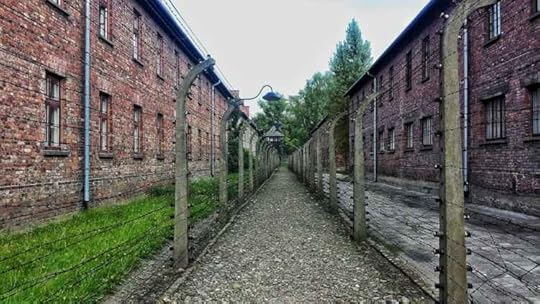 Photo by Pixabay
Photo by Pixabay Arguably the darkest site on the dark tourism list and, from first-hand accounts, the most eerie to visit. Located in Poland (not Germany), stepping foot on Auschwitz-Birkenau concentration camp is a profoundly sobering and emotionally challenging experience that offers a stark reminder of the horrors of the Holocaust. Situated near the town of Oświęcim, Auschwitz-Birkenau stands as one of the most infamous symbols of Nazi atrocities during World War II. As visitors step through the gates of the camp, they are transported back in time to a dark chapter of human history.
The museum’s exhibits provide a comprehensive overview of the camp’s grim reality, chronicling the systematic persecution, dehumanization, and mass murder of millions of innocent people, primarily Jews, but also Roma, Poles, Soviet prisoners of war, and others deemed “undesirable” by the Nazi regime. Photographs, artifacts, and personal testimonies offer a haunting glimpse into the daily lives of the prisoners, as well as the brutality and inhumanity they endured at the hands of their captors.
Ground Zero - New York, USA
 Photo by Roberto Lee Cortes - Pexels
Photo by Roberto Lee Cortes - Pexels The new tower, museum and memorial was still being built when I visited here in 2008. Today, Ground Zero in New York City holds a solemn place in the realm of dark tourism, representing one of the most recent and profoundly impactful events in modern history. The site, where the Twin Towers of the World Trade Center once stood before the tragic events of September 11, 2001, serves as a poignant reminder of the lives lost and the enduring repercussions of terrorism.
As visitors stand amidst the somber memorial pools, tracing the names of the nearly 3,000 victims inscribed around them, they are immersed in a visceral experience of mourning and remembrance. The accompanying 9/11 Memorial Museum further delves into the events of that fateful day, offering a comprehensive narrative that honors the memories of the fallen while confronting the complexities of terrorism and its global ramifications. What’s special here is you can get tour guides with direct connections to 9/11.
Port Arthur - Tasmania, Australia Photo credit Keith Davey-Unsplash
Photo credit Keith Davey-Unsplash Port Arthur in Tasmania was known for housing some of the most hardened and repeat offenders among the convict population in Australia during the 19th century. Once a notorious penal colony during the 19th century, this remote settlement now serves as a solemn reminder of the harsh realities endured by convicts and colonial settlers. Port Arthur served as a place to isolate and control convicts deemed particularly troublesome or dangerous to the penal system. These individuals faced brutal conditions and stricter discipline at Port Arthur, including solitary confinement and hard labor.
Through guided tours and immersive exhibits, guests delve into the lives of those who lived and labored within its walls, bearing witness to tales of hardship, resilience, and tragedy. You arrange day-trips from Hobart (Tasmania’s capital city) about one hour away.
Kura Hulanda Museum - Willemstad, Curacao
While we’ve explored the East African and Indian Ocean slave market in Zanzibar, the most notorious slave trade happened across the Atlantic to the Americas and the Caribbean. You can learn all about it at the Kura Hulanda Museum in Curacao. Housed within a meticulously restored 18th-century merchant’s house, the museum provides a comprehensive narrative of the transatlantic slave trade and its enduring impact on Curacao and the wider Caribbean region.
Through thought-provoking exhibits, including artifacts, artworks, and multimedia presentations, guests are confronted with uncomfortable truths and reflect on the shared humanity of those whose lives were shaped by this dark chapter in history.
Hiroshima Peace Memorial - Hiroshima, Japan
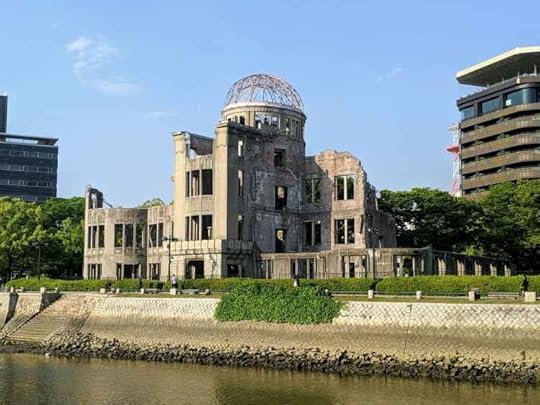 From Credit Caitlin James-Unsplash
From Credit Caitlin James-Unsplash Another eerie site to visit, the Hiroshima Peace Memorial in Hiroshima, Japan commemorates the devastating impact of the atomic bombing on August 6, 1945. The memorial, also known as the Atomic Bomb Dome or Genbaku Dome, located near the epicenter of the explosion, was preserved as a memorial to the bombing and serves as a powerful symbol of peace and remembrance. As such, it is the only building still standing in this massive dark tourism site that endured the blast to varying degrees.
Through exhibitions and educational programs, you get a comprehensive understanding of the events leading up to the bombing, its immediate aftermath, and the ongoing efforts to promote nuclear disarmament and reconciliation. It’s a poignant reminder of the urgent need to learn from history and strive towards a future free from the scourge of war and nuclear weapons.
Turn to the Dark SideNo, please don’t turn to the dark side, but I hope this hasn’t been too harrowing a read for you. As I said, I believe it’s important to visit and learn from dark tourism destinations. Plus, all these locations are not just about the dark history; there’s plenty of fun stuff to do also!
The post Dark Tourism: Learning Through Humans Worst Atrocities appeared first on Tim Roberts.
April 19, 2024
Remote Work Kenya: A Comprehensive Guide to the Wild Side
 Photo by Jason Zhao on Unsplash /*! elementor - v3.21.0 - 18-04-2024 */.elementor-widget-text-editor.elementor-drop-cap-view-stacked .elementor-drop-cap{background-color:#69727d;color:#fff}.elementor-widget-text-editor.elementor-drop-cap-view-framed .elementor-drop-cap{color:#69727d;border:3px solid;background-color:transparent}.elementor-widget-text-editor:not(.elementor-drop-cap-view-default) .elementor-drop-cap{margin-top:8px}.elementor-widget-text-editor:not(.elementor-drop-cap-view-default) .elementor-drop-cap-letter{width:1em;height:1em}.elementor-widget-text-editor .elementor-drop-cap{float:left;text-align:center;line-height:1;font-size:50px}.elementor-widget-text-editor .elementor-drop-cap-letter{display:inline-block}
Photo by Jason Zhao on Unsplash /*! elementor - v3.21.0 - 18-04-2024 */.elementor-widget-text-editor.elementor-drop-cap-view-stacked .elementor-drop-cap{background-color:#69727d;color:#fff}.elementor-widget-text-editor.elementor-drop-cap-view-framed .elementor-drop-cap{color:#69727d;border:3px solid;background-color:transparent}.elementor-widget-text-editor:not(.elementor-drop-cap-view-default) .elementor-drop-cap{margin-top:8px}.elementor-widget-text-editor:not(.elementor-drop-cap-view-default) .elementor-drop-cap-letter{width:1em;height:1em}.elementor-widget-text-editor .elementor-drop-cap{float:left;text-align:center;line-height:1;font-size:50px}.elementor-widget-text-editor .elementor-drop-cap-letter{display:inline-block}
You won’t really have a giraffe sticking its head through the window interrupting your remote work Kenya (unless you can afford to stay at Giraffe Manor in Karen, Nairobi). But, with its captivating landscapes, rich cultural heritage, and burgeoning digital infrastructure, Kenya has emerged as a popular destination for digital nomads seeking adventure and inspiration. From the bustling streets of Nairobi to the pristine beaches of the coast and the untamed wilderness of the bush, Kenya offers a diverse array of experiences to satisfy the adventurist spirit of remote workers.
In recent years, the phenomenon of digital nomadism has been on the rise, as individuals seek the freedom to work remotely while exploring the world. With the advancement of technology and the increasing availability of remote work opportunities, more people are embracing this nomadic lifestyle, including yours truly. With my latest stint in Kenya, I will cover all the essentials you need to know about being a digital nomad in Kenya.
Remote Work Africa Me writing in South Africa
Me writing in South Africa First of all, when aspiring digital nomads ask me for advice on where is best to travel, I usually provide this rule of thumb:
Beginners: First-world countries such as in Europe, North America, Australia, etc.
Intermediate: Countries throughout Southeast Asia and South America.
Advanced: Africa.
Africa as a continent has its fair share of challenges such as poverty, crime and power outages. Yet, it’s also one of my favourite regions to travel to. It has the most incredible wildlife on the planet, an amazing diversity of cultures, spectacular coastlines, islands and beaches, and many countries speak English. But because this is due to colonial history (not just the English), it can also be a hindrance – while most people are welcoming, some might look at you (if you’re white) like you just sailed in on the Brookes.
 Photo credit Stephan Bechert-Unsplash
Photo credit Stephan Bechert-Unsplash This was actually my second time in Kenya, the first being the start of 2020 when the spicy flu started spreading around the world and I was forced to return home early before fortress Australia closed its borders. That’s when, during lockdowns, I started writing my first book, That’s when, during lockdowns, I started writing my first book, Goodbye Office, Hello World! Find Freedom, Work From Anywhere and Travel the World.
As such, I feel I had unfinished business in Kenya, and returned to complete the job. That said, let’s dive in. But first, let’s get the boring stuff out of the way.
Kenya Visa OptionsWhen I went I had to travel on a 90-day tourist visa. But this was just as the president announced a new visa-free program, the first country in the world to do so. His reasoning was rather amusing, saying that – as the human species originated in East Africa, we are welcoming all home from around the world, or something like that.
You now just need to get an Electronic Travel Authorisation (ETA). The fee is significantly cheaper than the old tourist visa, but you can still only stay for 90 days.
Extending Kenyan Visa
If you wish to extend your ETA, you must visit and apply for extension at your nearest immigration offices. If successful, you can get another 90 days. After that, if you wish to stay in Kenya, you will have to do a visa run and restart the whole process. You can hop across the border to Tanzania (including Zanzibar), Ethiopia or Uganda, take your pick.
Getting Connected One of my favorite spots to work from at Diani Beach
One of my favorite spots to work from at Diani Beach First things first. When you exit the baggage claim at Nairobi airport you will see a SafariCom store. Get your local SIM card from here. There are several different packages available and you can top up your credit from the SafariCom App. Also download the Mpesa App and ask the SafariCom clerk to help you set that up also, which links to your local SafariCom SIM/number.
Mpesa Mobile Money AppMpesa is a mobile money app and is a must in my opinion when travelling Kenya. On a side note, Kenya was the first to invent this Fintech, kudos to them! Not only does just about every merchant accept Mpesa, but it means you don’t have to worry about carrying cash on you, which is much safer, especially if you’re staying in Nairobi.
On that note…
Where to Stay in KenyaFrom the big city and the bush to the beach, here are a few of the best options for working remotely in Kenya.
 Photo credit Grace Nandi-Unsplash
Photo credit Grace Nandi-Unsplash If you’re a big city slicker who likes the hustle and bustle, wants to be close to the action and loves to party, this is where you want to be. I spent roughly one and a half months in Nairobi and stayed at a few different locations. From my experience there, you want to stay in:
Westlands: Built up with plenty of malls, restaurants and nightlife. Need to keep your wits about you though, especially if out at night.
Parklands: More chilled than its neighbour Westlands but still close enough to the action. Close to Karura Forest which is an awesome nature reserve in the middle of the city.
Kilimani and Kileleshwa: These two are next to each other and more green than Westlands but also have some great cafes, restaurants and bars.
Karen: If you want to feel like you are not in a major city at all, Karen is where to be. Very green and full of tourist attractions such as Karen Blixen Museum, Giraffe centre and close proximity to Nairobi National Park. More expensive than the other options though.
Nairobi is also the best location to base yourself if you plan on visiting Masai Mara National Park, where the great migration takes place, Mount Kenya for hiking, or Amboselli National Park for incredible views of Mount Kilimanjaro.
The other city options are Mombasa, which I found too hot but it has beaches. And the third largest city is Kisumu, on Lake Victoria which I didn’t visit but I hear it’s pleasant but not too much going on.
Kenyan CoastIf you’re more of a beach person then you might want to settle somewhere on the coast. There’s a few options, starting from north to south:
Lamu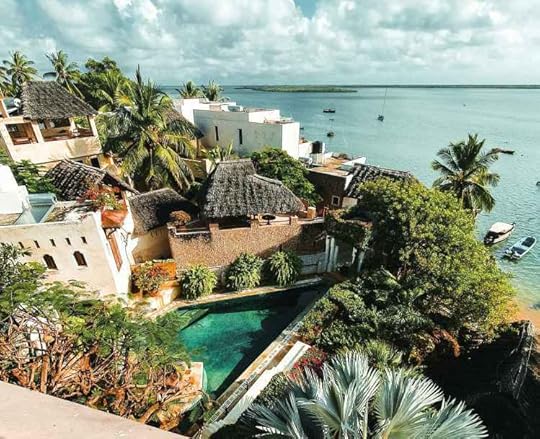
Lamu is an island close to the border with Somalia. It’s great if you’re seeking a tranquil escape. With its labyrinthine streets, centuries-old Swahili architecture, and pristine beaches, Lamu offers a serene retreat away from the hustle and bustle of Nairobi. Note, Lamu has been a target of Al Shabaab in the past but not for some time.
Malindi and Watamu Me house-sitting two troublemakers in Watamu
Me house-sitting two troublemakers in Watamu Both about half an hours drive from each other and popular with expats, these two coastal towns offer ancient ruins, fresh seafood delicacies, and some pristine beaches, Malindi and Watamu promise an unforgettable experience for those seeking both productivity and relaxation in a tropical paradise.
I was lucky enough to score a beachfront house-sit in Watamu over the Christmas and New Years peak season holiday. But I was unlucky enough to get two very troublesome dogs to mind (pictured above). Still had a blast though.
Mombasa Photo by Harshil Gudka on Unsplash
Photo by Harshil Gudka on Unsplash As the largest port city in East Africa, Mombasa boasts a rich diversity of influences, from Arab traders to Portuguese explorers, reflected in its diverse architecture, cuisine, and traditions. For digital nomads seeking a dynamic urban experience, Mombasa offers a bustling metropolis combined with beaches and nightlife. Personally, if recommend not staying on Mombasa Island but in one of the beach areas such as Nyali. The city (island) of Mombasa just gets too hot without reprieve. And besides the history of Fort Jesus, there’s not much else to see there. However, my pick is going a little further south to…
Diani Diani Beach, Kenya
Diani Beach, Kenya Renowned as one of Africa’s most stunning beach destinations, Diani offers a perfect blend of natural beauty and modern amenities, creating an idyllic setting for remote work and relaxation. This is where I spent a great deal of my time but I struggled with the heat in the middle of summer, which I do not recommend. It is also where I noticed the most fellow remote workers and I suspect Diani to become only more popular for digital nomads. I recommend south Diani over north.
Tip: If traveling from Mombasa, book a Bolt ride to the Likoni Floating Bridge and walk across to the other side of the Mombasa Harbour (if not too much luggage) and book a Tuk Tuk from the other side. You can catch an Uber, Bolt or taxi all the way but it can be costly and waiting for the car ferry can be a pain in the ass.
Another Tip: Go to Ali Barbours Caves Retaurant which is inside, you guessed it, a cave! I went here for my birthday (special occasion prices) and it’s an experience.
 Ali Barbour Caves Restaurant, Diani Beach Downsides to Digital Nomad Kenya
Ali Barbour Caves Restaurant, Diani Beach Downsides to Digital Nomad Kenya  Not as Affordable as Expected
Not as Affordable as Expected
This is not just me – I have heard it from a few nomads, and I was really surprised by the general cost of living in Kenya. While most things are significantly cheaper, like long term rentals if you can find them, other things were on par with developed countries, i.e. Western Europe, USA, etc. This was especially true for grocery shopping, dining or drinking out in bars.
Mzungu PricesMzungu is Swahili for “white person.” Nothing condescending about it… I think – a bit like Central and South America’s use of “gringo,” it’s hard to tell sometimes. Apparently it originates from when David Livingstone visited Zanzibar and the locals referred to him as “man who spins around on the spot,” which roughly translate to Mzungu, which I find quite amusing.
But what I am sure of is Mzungu prices. You will often get quoted and charged significantly more than locals which, to be fair, happens in many countries around the world. But that doesn’t make it right. After all, we are already there supporting their economy by spending tourists’ dollars, which we could just as easily take elsewhere. Tuk-tuk drivers are notorious for this. Always ask how much it will cost before committing to a ride. And then, as a rule of thumb, offer half as much as they quote you.
CrimeLike many places when travelling, you have to keep your wits about you. While it’s mainly Nairobi where you really have to be vigilant, I had my phone stolen inside a bar at Diani Beach when I left my guard down. I heard quite a few stories of locals and tourists alike having their phones snatched right out of their hands when walking in crowded areas, mainly in and around Nairobi CBD.
Hagglers and Beach BoysI go to the beach, as I imagine with most people, to relax, swim and reconnect with nature. It’s almost impossible to go to the beach in Kenya without being approached by someone trying to sell you something, whether it be a coconut, bangles, or in some cases, sex. These are known as beach boys, but others are plying their trade such as the Masai tribe. I know it’s their way of earning a living, but it can become very annoying when all you want to do is chill and mind your own business.
Power OutagesI was there in peak summer so I don’t know if the heat had something to do with it but I experienced frequent power outages. I’m talking almost every day. This is not ideal when you’re a digital nomad relying on the internet to earn a crust. This is why it’s crucial to get a SafariCom SIM plan with hotspot as a backup!
 Maneaters Lodge, Tsavo Best of Both World's
Maneaters Lodge, Tsavo Best of Both World's In Kenya you get the best of both worlds in terms of culture – you have the comfort of western culture, English speaking people, and familiar amenities, combined with the real Africa and pure traditional African culture as witnessed with the Masai.
You also get the best of both worlds in the form of some of the best National Parks for wildlife on the planet, my picks being:
Masai Mara Nature Reserve: Famous for the Masai tribe and the Great Migration.
Tsavo National Park: Stay at Maneaters Lodge (pictured) and learn the incredible history of two killer lions who ate as many as 135 railroad workers in 1898. The Hollywood film, The Ghost and the Darkness, was based on this. Additionally, while I stayed there I saw elephants, Hippo, crocodile, monkeys and a snake without even having to leave the lodge. Talk about wild!
Amboseli National Park: Where you can see some of the best views of Mount Kilimanjaro from the Kenyan side of the border, plus an abundance of African wildlife.
Then, you also have an amazing coastline to explore all the way from Lamu in the north to Diani in the south, with relaxing tropical vibes, warm clear waters and some excellent snorkelling, diving and kite surfing spots.
NightlifeI’ve partied at some pretty wild places around the world, and I have to say that Nairobi ranks up there with the best. Kenyans love a good party, so much so that their main form of transport, Matatu’s (like a pimped-up minibus) turn into mobile party buses at night, some with strobe lights and incredible sound-systems. If you too like to party, you must experience a Matatu’s party bus. Just find a buddy to go out with.
DatingUnfortunately, there is a sex tourism industry in Kenya. The worst I saw of it was in Diani, where every day I would see a really old European man (mostly Germans) with a really young Kenyan woman. But it also worked the other way – I saw nearly as many western white women with young Kenyan beach boys. I became friends with a young, good-looking beach boy in Watamu (my driver) and he was busy every night of the week with female tourists during peak season.
How is this an upside? It’s not, I just wanted to put that out there.
But dating can be great fun. Most Kenyans just want to go out and have a good time. Just expect to pay for everything. And I mean everything. But it’s worth it.
Get Out There and Go Wild!All in all, I believe I will be back to Kenya at some stage. Although, I have now moved onto Tanzania where the safari’s are significantly cheaper due to the Kenyan government doubling, sometimes tripling the entry fee to their national parks for foreigners. As a result, I will now be planning to tick off a bucket list item – watching the great migration in the Serengeti in Tanzania instead of Kenya.
I hope you found this helpful, stay tuned for future posts on all things travel and location independence related.
The post Remote Work Kenya: A Comprehensive Guide to the Wild Side appeared first on Tim Roberts.
March 24, 2024
Minimalist Travel
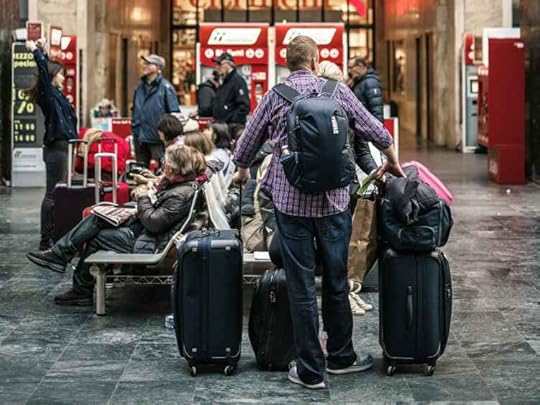 Photo credit Tommaso Pecchioli-Unsplash /*! elementor - v3.20.0 - 20-03-2024 */.elementor-widget-text-editor.elementor-drop-cap-view-stacked .elementor-drop-cap{background-color:#69727d;color:#fff}.elementor-widget-text-editor.elementor-drop-cap-view-framed .elementor-drop-cap{color:#69727d;border:3px solid;background-color:transparent}.elementor-widget-text-editor:not(.elementor-drop-cap-view-default) .elementor-drop-cap{margin-top:8px}.elementor-widget-text-editor:not(.elementor-drop-cap-view-default) .elementor-drop-cap-letter{width:1em;height:1em}.elementor-widget-text-editor .elementor-drop-cap{float:left;text-align:center;line-height:1;font-size:50px}.elementor-widget-text-editor .elementor-drop-cap-letter{display:inline-block}
Photo credit Tommaso Pecchioli-Unsplash /*! elementor - v3.20.0 - 20-03-2024 */.elementor-widget-text-editor.elementor-drop-cap-view-stacked .elementor-drop-cap{background-color:#69727d;color:#fff}.elementor-widget-text-editor.elementor-drop-cap-view-framed .elementor-drop-cap{color:#69727d;border:3px solid;background-color:transparent}.elementor-widget-text-editor:not(.elementor-drop-cap-view-default) .elementor-drop-cap{margin-top:8px}.elementor-widget-text-editor:not(.elementor-drop-cap-view-default) .elementor-drop-cap-letter{width:1em;height:1em}.elementor-widget-text-editor .elementor-drop-cap{float:left;text-align:center;line-height:1;font-size:50px}.elementor-widget-text-editor .elementor-drop-cap-letter{display:inline-block} I remember when I was in Colombia I gave away a large luggage full of clothes and other assortments to my neighbor. I told her to give it to people who need it. She did. And it felt good, in more ways than one. Not only had I helped those more in need but I had taken a huge weight off my shoulder. Luggage that massive bag around in the Colombian summer was stressful. I realised then that minimalist travel was the way to go, especially living life as a digital nomad. But did I learn my lesson? No. As I write this, I have another large piece of luggage stored in an Airbnb hosts garage on the other side of the world in Spain… one day I will pick it up… or not.
I think for many of us worldly travelers, we can relate to an experience where we wish we packed less, sometimes up to the point of a whole piece of luggage. And those of us who have had baggage checked in only for it to go missing somewhere between our departure and destination, know of the stress and frustration that causes. Yeah, fuck you QANTAS, you ruined my easter break… anyway, let’s delve into minimalist travel.
Minimalist Travel
Minimalist travel is both a (relatively) new mindset and movement. The philosophy means less baggage and more meaningful experiences. It’s about packing efficiently with essentials that serve us well. It’s not about a suitcase filled with “just-in-case” items but about embracing a minimalist approach to travel. There’s a saying in the literature world:
“Kill your darlings.”
What it means is, if a sentence, scene or even a chapter isn’t serving your story, then cut it, no matter how much you love it.
And sometimes, you have to also kill your belongings, when it comes to travel anyway.
Moreover, minimalist travel is also about savoring a handful of destinations, soaking in their essence, and contributing positively. Plus, a commitment to low-carbon travel aligns seamlessly with your vision of a more sustainable and responsible journey.
But where did this idea of minimalism come from?
The Minimalist MindsetBefore minimalist travel, there was first the concept of minimalism. Rooted in the belief that less is more, minimalism is a conscious decision to simplify, declutter, and prioritize what truly matters. At its core, minimalism is a rebellion against the excesses of consumer culture. It urges us to break free from the constant pursuit of more, encouraging a shift toward mindful living. By paring down possessions and commitments, individuals find space to breathe, fostering a deeper connection with the things, experiences, and relationships that truly bring joy and meaning.
Joshua Fields Millburn and Ryan Nicodemus, the dynamic duo behind the acclaimed book and documentary, “Minimalism: A Documentary About the Important Things,” embarked on a transformative journey that reshaped not only their lives but also inspired countless others. With a shared realization that a life cluttered with possessions doesn’t equate to happiness, they embraced minimalism as a way to find purpose and joy in the essentials.

Their work emphasizes the profound impact of intentional living, illustrating that true wealth lies not in material abundance but in a life well-lived. Millburn and Nicodemus have become prominent voices in the minimalist movement, encouraging individuals to question their consumer-driven habits and seek a more meaningful existence.
And that’s what I love about them – they are anti-consumerists. And what happens when we consume less? We have more money for travel and adventure!
Minimalist Design Photo credit - Pexels-tranmautritam
Photo credit - Pexels-tranmautritam One of the most famous minimalists was the late Steve Jobs, co-founder of Apple which, at the time of writing, is the largest company in the world by market capitalization. Fueled by a deep appreciation for Zen philosophy, Steve Jobs ingrained minimalism into the essence of every design. His approach involved urging the team to strip away unnecessary elements, leaving only the essential core of the product.
Jobs was known for championing simplicity, advocating for a design philosophy that eliminated noise and centered on meeting the fundamental needs of the user. In embracing minimalism, he crafted products that seamlessly blended form and function, leaving an indelible mark on the world of technology and design.
Jobs’ embrace of minimalism extended past the office and his world-changing products. There are several reports from visitors to Steve Jobs’ home reporting there was almost no furniture in his house. This brings us to arguably the most common use of minimalism in design – interior design. Scandi Japanese interior designs are a textbook example of this.
Why Minimalism and Travel are the Perfect Match
At the heart of minimalist travel lies a shared commitment to intentional living, valuing experiences over possessions and cherishing the essence of each moment. I personally cannot stand when I hear another traveller brag about how many countries they’ve visited, when they have only stayed in the majority a week or two, and probably inside a resort! Heck, country-counters probably even count airport layovers as ticking off a destination.
Minimalism, with its emphasis on simplicity and mindful choices, seamlessly intertwines with the concept of slow travel, which is what us “slow-mads” are all about. Slow travel aligns perfectly with the minimalist ethos, encouraging us to break away from the hustle, appreciate the journey, and create lasting memories. Because that’s what it’s all about.
Experiential travel finds a natural ally in minimalism. It’s not about collecting passport stamps or ticking off destinations; it’s about the richness of encounters, the authenticity of experiences, and the depth of cultural immersion. Minimalism encourages us to shed the excess baggage, both physical and metaphorical, enabling us to fully engage with the world around us.
Carry-on Luggage Only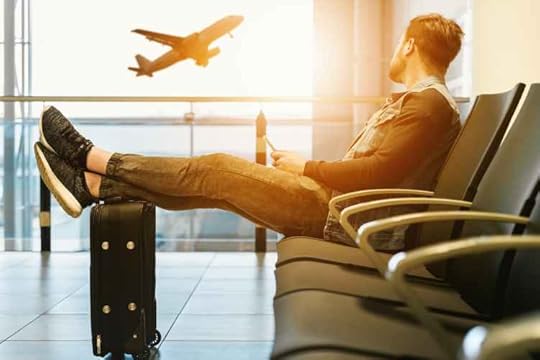
How many bags should you take? It’s human nature to want to take more stuff than necessary, “just in case”. But some travelers swear only to travel with carry-on luggage, especially for solo travel, myself included. Not only will it minimize stress but also save time as there’s no waiting at the baggage carousel. You land, walk straight through the airport security check, and exit the terminal.
It’s no easy feat, but with the right minimalist packing list and travel backpack, it can be achieved with just two bags (although one bag is also possible) – one for the overhead compartment, which has to meet certain dimensions or weight, typically 7kg (any extra weight is extra cost). The second bag can be hand luggage, which can be a handbag and even a small backpack. Most airlines require hand luggage that can fit underneath the seat in front of you.
Of course, this is much easier if you’re heading for two weeks in Southeast Asia where just a bag with shorts, t-shirts and flip-flops is all that’s required. But for those northern hemisphere destinations in the winter, you’re going to hope for more than just a t-shirt.
As such, let’s take a look at some other minimal packing list tips to enhance your travel experience.
Minimalist Packing List for your Travel Gear Photo credit - Pexels-Vlada-Karpovich
Photo credit - Pexels-Vlada-Karpovich Whether you’re exploring bustling cities, serene beaches, or ancient landscapes, the art of packing light is a universal passport to a more enriching and unburdened traveling experience.
The core principle is quality over quantity, where each item serves a distinct purpose. A well-thought-out toiletry kit with multi-functional products adds an extra layer of efficiency to your minimalist travel arsenal. The goal is to carry only travel items that enhance your journey, leaving room for the spontaneous and unexpected moments that make travel truly magical.
There are excellent travel bags on the market now that are designed for efficient packing. They come with special features such as a main compartment, and bottom compartment and some even fold out to a travel capsule wardrobe!
If you do not have the luxury of such luggage overcoming less space, consider investing in the following:
Suction/vacuum packs
Packing cubes
Compression cubes
Capsule wardrobes
Nomad backpack
Another excellent minimalist travel hack is buying some items at your destination, especially if it’s a lower-cost-of-living locale from where you’re from. Items you can pick up abroad could include:
T-shirts and long sleeves
First aid kit
Wet toiletries
Dry toiletries
Water bottle
Camera gear
Another trick we’ve heard is to fill a packing cube full of clothes to use as your onboard pillow to fit more things!
What is the 1 to 6 Rule for Packing?The 1 to 6 rule encourages a minimalist approach to packing, emphasizing versatility and efficiency in selecting clothing items for various occasions and climates during the journey. The rule suggests bringing six clothing items for every non-clothing item when preparing for a trip. For example, a wet toiletry bag is an essential item. You can now add two pairs of socks and four pairs of underwear to your minimalist travel packing list. This simple system is an excellent way to travel light.
What is the 5,4,3,2,1 Packing System?The 5-4-3-2-1 packing system is a personal favourite, and a popular method for minimalist packing that helps travelers prioritize essential items while keeping their luggage light and organized.
Here’s how it works:
5 – Select five clothing items: Choose five versatile clothing pieces that you prefer and that can be mixed and matched to create multiple outfits that feel comfortable. This is where your inner fashionista fun stuff comes out. But be sure to opt for items that are appropriate for the destination’s climate and activities.
4 – Pick four pairs of underwear and socks: Pack four pairs of underwear and socks to ensure you have enough for your trip. Consider packing quick-drying materials or bringing along laundry detergent for longer journeys.
3 – Bring three pairs of shoes: Limit yourself to three pairs of shoes—one for walking or hiking, one for casual wear, and one for dressier occasions. Choose shoes that are comfortable, versatile, and suitable for the activities you have planned.
2 – Pack two accessories: Select two belongings, such as scarves, hats, or belts, to add variety to your outfits and provide additional functionality. Accessories can also help personalize your look and adapt to different weather conditions.
1 – Include one personal item: Bring along one personal item, such as a toiletry kit, medication, or electronic device, that is essential for your comfort and well-being during the trip.
By following the 54321 packing system, travelers can streamline their packing process, avoid overpacking, and ensure they have everything they need for a successful journey. This method encourages a thoughtful selection of items and promotes a minimalist approach to travel packing.
Less baggage the betterSo, there you have it – along with emotional baggage, actual baggage will weigh you down too! Give it a go and see how light you feel. Now, if you excuse me, I gotta go find that baggage of mine in Spain.
The post Minimalist Travel appeared first on Tim Roberts.
September 1, 2023
Digital Nomad Philippines: The Ultimate Guide to Navigating the Archipelago
 /*! elementor - v3.18.0 - 04-12-2023 */.elementor-widget-text-editor.elementor-drop-cap-view-stacked .elementor-drop-cap{background-color:#69727d;color:#fff}.elementor-widget-text-editor.elementor-drop-cap-view-framed .elementor-drop-cap{color:#69727d;border:3px solid;background-color:transparent}.elementor-widget-text-editor:not(.elementor-drop-cap-view-default) .elementor-drop-cap{margin-top:8px}.elementor-widget-text-editor:not(.elementor-drop-cap-view-default) .elementor-drop-cap-letter{width:1em;height:1em}.elementor-widget-text-editor .elementor-drop-cap{float:left;text-align:center;line-height:1;font-size:50px}.elementor-widget-text-editor .elementor-drop-cap-letter{display:inline-block}
/*! elementor - v3.18.0 - 04-12-2023 */.elementor-widget-text-editor.elementor-drop-cap-view-stacked .elementor-drop-cap{background-color:#69727d;color:#fff}.elementor-widget-text-editor.elementor-drop-cap-view-framed .elementor-drop-cap{color:#69727d;border:3px solid;background-color:transparent}.elementor-widget-text-editor:not(.elementor-drop-cap-view-default) .elementor-drop-cap{margin-top:8px}.elementor-widget-text-editor:not(.elementor-drop-cap-view-default) .elementor-drop-cap-letter{width:1em;height:1em}.elementor-widget-text-editor .elementor-drop-cap{float:left;text-align:center;line-height:1;font-size:50px}.elementor-widget-text-editor .elementor-drop-cap-letter{display:inline-block} As more of us demand a better work-life balance, including choosing to work when and where we want, destinations offering a more affordable cost of living and attractive lifestyle are evermore appealing. Having lived in multiple countries around the world, I like to give first-hand and personal accounts of my experiences. You can see other examples of the good as a Cape Town digital nomad, and the not so good when getting my drink spiked in Colombia.
Now, having just completed six months as a Philippines digital nomad, it’s now time for me to sum up my experience. And yes, there were the good, the bad, and sometimes strange. And I’ll cover all three. As my loyal readers know, I don’t hold back, I tell it like it is. As such, I apologize in advance for any offensive content – sorry (not sorry).
First, a bit about one of the main challenges digital nomads face:
Relationships are hard as a nomad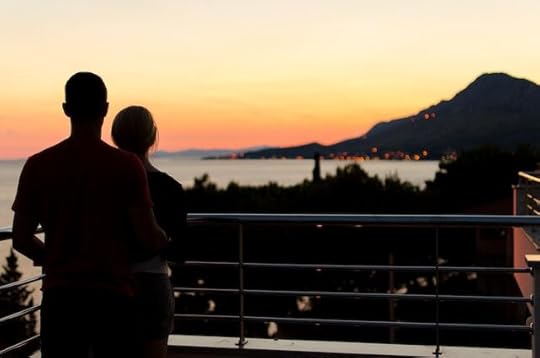
I thought a fellow, female nomad was the answer to having a successful relationship on the road. As such, I joined such Facebook groups as Nomad Soulmates and Single Nomads in the hope of finding a female version of myself. Someone I could travel and work remotely with.
And I did! We clicked easily online over our shared passion for travel, digital marketing and remote work. But as it turns out, traveling, living and working from home together has its own set of challenges. There’s a reason why so many married couples divorced during the COVID government-induced work from home orders – couples need their space!
As a result, for the latter three months of my time spent in the Philippines, I was a single man. Being a foreigner, dating in the Philippines was on another level. But more on that later.
Digital Nomad Life in the Philippines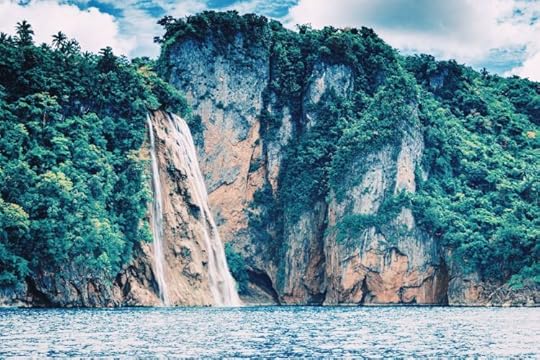
The Philippines is a popular destination for digital nomads, thanks to its affordable cost of living, beautiful beaches and mountains, friendly people, and expat friendly processes. However, there are also some downsides to living in the Philippines as a digital nomad, such as the traffic, bureaucracy, and petty crime. In this article, we’ll take a look at the good, the bad, and the bizarre of being a Philippines digital nomad.
The GoodAffordable cost of living: Not as affordable as it used to be but still one of the lower cost of living countries in Asia.
Beautiful beaches and mountains: The Philippines is home to some of the most beautiful beaches and mountains in the world.
Friendly people: I found the people in the Philippines some of the most friendly and welcoming I have experienced in my vast travels worldwide.
Tourist visa extension: You can basically just keep extending your tourist visa at the Bureau of Immigration, albeit for a fee.
Beautiful women: For the lads – there are many beautiful women in the Philippines and are much more feminine (not feminazi) as you find in the west.
The BadTraffic: The traffic in the Philippines can be very bad, especially in the major cities such as Manilla and Cebu. If you’re not used to driving in heavy traffic, it can be a challenge.
Bureaucracy: The bureaucracy in the Philippines can be slow and inefficient. If you need to get a visa or other paperwork done, it can take some time. You will need to practice patience – Grant me patience, Lord. But hurry!
Petty crime: There is some petty crime in the Philippines, such as pickpocketing and bag snatching. But to be fair, I did experience this in the places I stayed.
Internet: While you will be fine in the cities and larger towns, when you go island hopping to more remote destinations, you may struggle to get data. Even the WIFI in some hotels is sketchy. Additionally, many cafes do not provide WIFI, meaning you will need to hotspot your phone.Best Places for Digital Nomads in the Philippines
Although I didn’t get to experience the whole of the Philippines as a digital nomad, (after all, there are 7,641 islands to explore!) I believe I chose pretty well. Based on my own experience and from meeting and speaking to other nomads and expats, here are what I consider to be the best places for digital nomads in the Philippines:
Boracay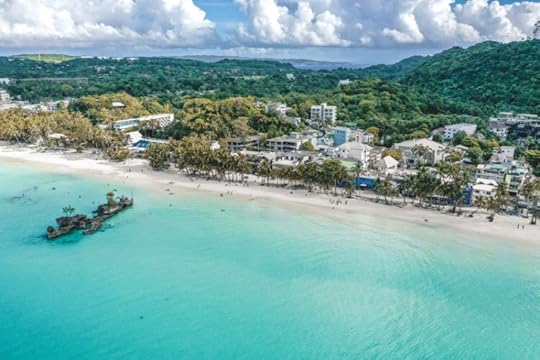
Boracay is a small island and where I spent the majority of my time living as a digital nomad in the Philippines. It has long been a popular destination for tourists from around the world, but the island has seen a surge in digital nomads attracted by its vibrant beach culture, thriving nightlife, and affordable cost of living.
Philippines coworking spaces are increasing all over Boracay. A few of which include:
Musyon CoWorking: It’s tiny but stays open all night so is good for nomads who need to work on opposite time zones such as the US. The Internet is solid and has a proper barista so coffee is good.
KnEsq Coworking Space: This is a larger coworking space and is good for conference calls or if you need some privacy. Internet and coffee are also good.
Starbucks: The Boracay Starbucks takes the cake for the best views from any Starbucks I’ve worked at in the world (and I’ve sampled a lot!). It is situated on the White Beach(front) and spans two levels plus a rooftop balcony (pictured below). Downside – no WIFI and limited electricity port but the office views more than compensate. I would do a few hours work with my Grande caramel macchiato, take a break and swim outside in the crystal clear waters – and repeat two or three times a day.
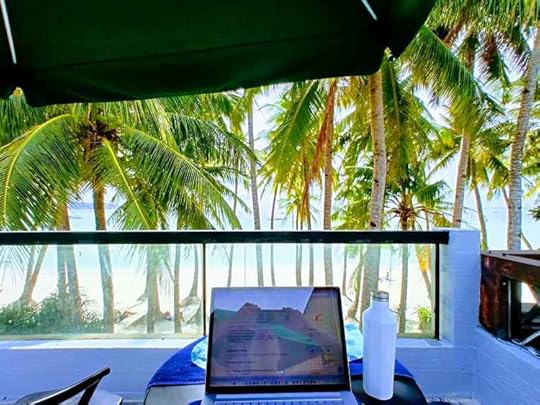
Boracay is really all about White Beach, consistently rated as one of the best beaches in the world. This is because the sand is as white (hence the name) as the water is clear – some of the cleanest waters I’ve ever seen. The beach is super long and broken up into 3 sections:
Stations 1: This is the upmarket end with swanky resorts. It’s great if you want a bit of peace and quiet. The water here is super shallow, you can literally walk out 100 meters and still have your head above water,
Station 2: This is the hub, where all the action is at. The epicenter is DMall where there are several shops, restaurants and bars. This is the most touristy and crowded section of White Beach, or the whole of Boracay for that matter.
Station 3: Here is like a happy medium of Stations 1 and 2. A mixture of resorts, restaurants and bars but less crowded than Station 2. The water here is deeper if you enjoy proper swimming.
On the other side of the island is Bulabog Beach. Also nice and much quieter than White Beach. It is also a kiteboarding destination and attracts kiteboarders from all over the world for the season from November through May.
The island also offers a wide range of accommodation options, from budget-friendly hostels to luxury resorts, making it suitable for digital nomads to affluent holidaymakers. You can find good deals in Facebook groups.
As the sun sets over White Beach, some of the best sunsets I’ve ever seen, Boracay transforms into a lively hub of activity, with beachfront bars and restaurants offering fresh seafood, live music, and quite a few ladyboys! Beware lads, some are gorgeous and not always upfront about their original gender.
If beach and island life is your thing, with a healthy dose of nightlife, then Boracay could be the perfect paradise for you. I managed three months before I needed more action, amongst other solopreneurs and freelance business owners. Being a city boy at heart, it took me to my next destination…
Cebu City

Although I spent limited time in Manila, I personally felt Cebu was more the city for me (sorry Manila!). Cebu is more connected with nature, which is always a big plus for me – it’s not hard to escape the hustle and bustle into nature whether it be a ferry ride to Bohol or Camotes or a half-hour drive up the mountains or venturing inland to waterfalls.
For me (and a lot of expats), the best place to live is Cebu IT Park. It is well developed, clean and safe. It is also home to multi-national corporations, Ayala Mall and several dining and bar options. There are also countless cafes and coworking spaces.
Cebu is located smack-bang in the middle of the Philippine archipelago which makes it a great base for exploring other islands. The city has all the amenities you need. The traffic, like Manila, sucks but I lived in Cebu IT park and rarely left except for when exploring other areas outside the city. I rented a nice studio apartment with a mountain view for about $370 USD per month – not bad!
One of the biggest attractions of Cebu Island is Oslob at the south of the island. This is the embarkation point to swim with whale sharks. As much as I wanted to do it (swimming with whale sharks is on my bucket list) I decided not to after learning of the unethical practices to cater for tourism dollars.
Palawan
Although I didn’t live here, I visited and liked what I saw. I also know of Philippines digital nomads choosing their base as Palawan. The main issue here is internet reliability, as the long island is mainly un-spoilt nature. Puerto Princesa is the capital and where the most reliable internet connection is. It’s no surprise then that most nomads choose to base themselves here and explore other parts of the island when not working.
The two main tourist destinations of Palawan are:
El Nido: An archipelago of pure-nature islands characterized by towering limestone cliffs and pristine aqua-marine bays and beaches. Hidden Beach (pictured) was recently named .
Coron: More stunning natural landscapes, including crystal-clear lakes, coral-rich oceans, and limestone cliffs. It’s a mecca for divers and outdoor enthusiasts, offering some of the best wreck diving spots in the world.
These are just the famous destinations and are well-worth visiting – just make sure you go outside Philippines holidays (I made the mistake of going during Holy Week) to avoid the crowds. I know that if you lived in Palawan long term you would discover many hidden gems that the rest of the world doesn’t know about. I hope to return one day to do this.
Philippines Visa Process for Nomads
Most passports will enter the Philippines on a 30-day tourist visa. Here is the process to become a digital nomad in the Philippines:
During your 30 days you can apply to have your tourist visa extended by another 30 days. This can be done either at a Bureau of Immigration office or online. This will cost you roughly $50.
After your second month, you must apply for an Alien Certificate of Residence (ACR). This will be the most expensive part of the process – roughly $150, but allows you to extend your visa for six months. You must register this in person at a Bureau of Immigration office as they will provide you with a physical ACR identity card – do not lose this!
When your ACR runs out, you may wish to apply for extension or residency. Marrying a Filipnia or Filipino helps your case.
From my own experience, they asked me more questions about my intentions to extend my visa in the Bureau of Immigration in Boracay, a small island. It was a somewhat smoother process in Cebu. But for the easiest (no questions asked) process, apply for visa extension in the BOI in Manila (pictured).
Dating in the Philippines
I’ll be honest, as a single white foreigner, dating in the Philippines was epic. And I’m not flexing here (okay, maybe a little), but it was so good to meet such friendly and feminine women who were so fun to hang out with. Sure, you get your bad-eggs who see you as an ATM machine, but you can filter them out pretty easily.
And this is not just for the men. I saw plenty of western women enjoying the company of local Filipinos too. Unfortunately, I did not find my forever friend/soulmate there, but I certainly gave it a good nudge.
The Trans Factor
I don’t have anything against trans – whatever floats your boat. What I did find frustrating, however, was the deceptive ones. Too many times I would match with a “woman” on a dating app only to learn once we started talking that they were trans because they hadn’t stated it upfront on their profile. This would create unnecessary and awkward conversations. Sometimes, it can be incredibly hard to tell the difference and many ladyboys are gorgeous looking.
The SexPat and Sex Tourist FactorEventually,I had to leave the Philippines in fear of becoming a sexpat – these are mostly old western men (mostly American and UK) who are there for either sex tourism or to find a beautiful young wife they otherwise could not score back home, or both. For example, I saw one attractive young Filipina, no older than 35, with a seriously old man in a mobility scooter. I shit you not.
Of course, money plays a big role here – the man gets his trophy wife, and the woman gets her financial needs met when job prospects and wages are so low in PH), which creates a win-win scenario. I am actually considering my next non-fiction book to be titled, Women Want Money, Men Crave Sex... controversial, I know (but true). And that’s why I like it.
Next Chapter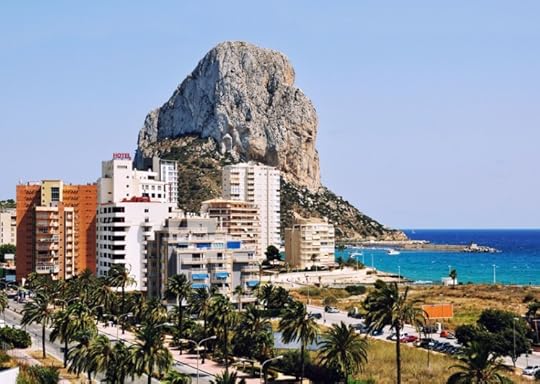
Now, I’m in the Costa Blanca, Mediterranean Coast of Spain, for three months. I am staying in a tiny village called Xalo Valley. There’s literally nothing to do here. The place is full of geriatrics, both Spanish and English. But that’s the point. The Philippines got a little too distracting for me as a single man, if you catch my drift.
I came here to focus on finishing my first novel, Highly Flawed Individual. It is the first in a series called, The Misadventures of Archie Flynn: Modern-Day Nomad. Not based on me at all… Hopefully the next post will be announcing its launch!
Until then,
Remember, YOLO!
Be free,
Fly like a bird,
Fuck the system.
The post Digital Nomad Philippines: The Ultimate Guide to Navigating the Archipelago appeared first on Tim Roberts.
May 15, 2023
How to Price Yourself as a Freelancer

When I first started as a freelancer, like most newbies, I had no idea how to charge. As such, I turned to a close friend in advertising.
“$100 an hour,” he said.
“$100 an hour!? ” I replied incredulously, “I can’t ask for $100 an hour. I’m just starting out.“
“Okay, then. $75 an hour for now, then raise it to $100 inside a year,” he suggested.
I ended up quoting $35 an hour to start with (which I regret). After all, my friend was probably used to dealing with top agency advertising copywriters, whereas I was just a rookie web copywriter.
Fast forward to today, and I am charging at least $100 per hour; however, I do not quote by the hour (more on that later). Looking back, I understand why my friend recommended $100 per hour. When you quote what you believe you are worth, it shows that you back yourself and, in turn, you gain more respect from your clients and they will be more likely to pay you as such.
On the flip side, you also need to consider quoting what the market will bear. What exactly do I mean by that? Let’s deep dive into freelance quoting.
How to Price Freelance Quotes
As most of us freelancers tend to be insecure and possibly suffer from imposter syndrome, starting out quoting low isn’t such a bad idea when getting started. As you learn and grow as a freelance, whatever, you can raise your quotes along the way. I found that I had a gut feeling if I raised my rates too high. Listen to your gut feeling. If it feels right, it probably is!
What feels right to you may be determined by where you live, cost of living, and what you think you need to earn as a salary. You may need to crunch some numbers, and many experts to advise this to determine your rates.
However, I have a much simpler rule of thumb:
If you have no experience in your chosen freelance profession, then I would suggest you start low around the $50 per hour rate.
After a year, if you are confident in your abilities, raise your rates to $60 per hour.
After two years of growing as a freelancer, raise your rates to $75 per hour.
Suppose you have significant in-house experience in your chosen freelance profession. In that case, you could easily charge $75 per hour.
If you are still working as a freelancer after five years, you should be able to confidently quote $100 per hour.
How to Quote $100+ per hour
The answer; by not quoting by the hour at all.
Excuse me?
Allow me to explain.
After years of freelance copywriting, I have learned roughly how long a project will take me. Use a project timing platform to do the same and for better time management. Then, instead of quoting by the hour, I quote the client a lump sum for the whole project, based on my rate of $100 per hour.
And here’s the thing, the rate of $100 an hour is never mentioned to the client.
More often than not, the client accepts the quote. However, they might like to know how you came up with that figure. And fair enough. In that case, you need to provide them with a formal quote and break it down into items listed with the hours estimated to complete task times the rate per hour charged. Take a look at this old quote of mine I created in a MS word template (I know use apps like Quickbooks or Xero):

Yes, in this situation, they know how much you charge by the hour. Note, at the bottom of the quote, I have included a clause that the quote is subject to change. Including this will protect you if they try and add further work down the track.
Also note, that I have included an upfront amount of 50%. While this seems high, it is not uncommon to ask for across-the board in freelancing and creative contractors. It serves two main purposes:
Ensures you are paid for your work.Improves cash-flow; which is essential for the freelancer What if the clients says the quote is too high?
This will happen. Not often, but it will happen. So, I draw upon my screenwriting skills to write you a script which you can either make your own, or recite it word for word.
Client: That’s a little higher than I expected.
Me: Okay, what figure did you have in mind?
Client: $….
Me: Okay then. Well, those are the rates I charge all my clients; however, I do really like this project and would like to work with you. If I could come down in price a little, are you willing to come a bit and meet me in the middle?
From my experience, they will agree to meet you in the middle. And, as a result, you will still earn close to your desired rates.
If, however, they do not compromise, then take that as a red flag and thank them for considering you as their freelancer and move on. Some clients are more trouble than they are worth and are best avoided from the get-go. To learn more about which red flags to look out for when taking on a new client, check out my next post entirely dedicated to the subject.
The post How to Price Yourself as a Freelancer appeared first on Tim Roberts.
April 2, 2023
Drink Spiking in Colombia: How I Survived the Devil’s Breath

I’ve been through some crazy experiences in my travels. From getting arrested in Rio de Janeiro to paying off corrupt cops in Bali, I’ve had some hairy moments. But nothing like when I got hit with the Devil’s Breath, AKA scopolamine drug, in Cartagena, Colombia. I’m telling this story as a survivor of burundanga drink spiking in Colombia to spread awareness and warn my fellow travelers, as not all come out of this experience alive to tell the tale.
What is Burundanga? The Daytura flower. I have even seen this plant on the northern beaches of Sydney, Australia
The Daytura flower. I have even seen this plant on the northern beaches of Sydney, Australia
In short, Burundanga is a drug extracted from a plant called “borrachero” shrub, most commonly found in Colombia and also known as Datura, Jimson Weed, Devil’s Snare, or the Green Devil. It looks exactly like the photo above because that is a genuine picture of borrachero. Pretty. Before you pick it to give to your loved one, that beautiful flower contains the evilest substance in the world – scopolamine.
What is scopolamine poisoning?
Scopolamine is the drug some demented bitch in Cartagena used to drug, kidnap, and rob me. You probably want a less hostile definition than that, and I am happy to provide it. My apologies, but the memory still brings up strong feelings.
Scopolamine is extracted from the seeds of the pretty tree above and powdered via a chemical process used for hundreds of years by native South Americans for spiritual ritual purposes. Of course, it wasn’t until well after the colonists arrived that people found a more deviant use for its effects.
Besides hallucinogenic, Burundanga can lead to a complete lack of free will. It makes the victim wholly submissive and obedient, caused by a reduction in declarative memory. It does not make you unconscious like date-rape drugs such as Rohypnol might, and it just turns you into somewhat of a fully functioning zombie. Hence its other nickname, the zombie drug.
A comparison that some might be able to relate to is a blackout caused by drinking too much alcohol. A drinking blackout does not mean you pass out; you lose a chuck of your recollection of your night due to a reduction in declarative memory brought on by rapid alcohol consumption.
Now, if that’s not scary as fuck enough, here’s the other clincher: Scopolamine has no taste or smell. So, there’s no way to detect this evil-ass drug if your drink has been laced with it!
Drink Spiking Incidents Colombia The hugely popular expat and digital nomad city of Medellin
The hugely popular expat and digital nomad city of Medellin There have been countless horror stories of people emerging from the effects of Burundanga in Colombia only to find themselves robbed or worse. When I say worse, there are burundanga reports of victims with body organs missing. But the worst possible outcome from Burundanga poisoning is death.
Even while I was there in 2022, a US tourist died in Medellin just after I survived my Scopolamine experience. After meeting a woman on Tinder who drugged and robbed him with Burundanga, the victim overdosed and never woke up. This is just one of many instances of Burundanga drug crime in Colombia.
Colombia’s National Police report that Scopolamine attacks are rising, especially in Bogotá. But also in Medellin and Cartagena, the two other major cities and tourist, ex-pat, and digital nomad destinations. But it’s not just foreigners who need to look out; locals can be victims too. But the difference is tourists’ lack of awareness of the Devil’s breath compared to the local population.
As such, allow me to tell my own story…
Drink Spiked Detection: Fateful day in Cartagena The fort wall that surrounds the old town, and where I exercised and met the woman.
The fort wall that surrounds the old town, and where I exercised and met the woman. I’ve had my fair share of bad dates in my time. Once, a real estate agent who tried to sell me a house on our second date. I had another that was the best first date in my life, but when I attempted to follow up, she couldn’t remember me. Turned out she had a split personality, and I was trying to line up a second date with the “other” woman.
But nothing comes close to my first date on May, Friday 13th, 2022; yes, it happened on Friday the 13th. I was traveling around and working remotely from Colombia at the time. It all started when I was exercising on top of the fort wall surrounding Cartagena’s historic center. The above photo shows exactly where I exercised. As I was finishing my training further down the wall, an attractive young Colombian woman was walking along; she smiled at me, and I smiled back. Then she said something in Spanish to me, and I replied:
Lo siento, mi español está poco.
But she persisted, desperately trying to communicate with me in Spanish. I couldn’t help but notice how beautiful she was. Black Colombian, couldn’t be older than twenty-five, with an enchanting smile. So, I pulled out my phone and used the Google Translate App to communicate with her.
She was interested in where I was from and what I was doing in Cartagena. We sat on the wall and talked about stuff through the translator app. I was single, so I thought, what the heck, and asked if she wanted to have dinner tonight. She seemed delighted by the idea, and we agreed to meet at the same place on the wall at 6 pm that evening.
Drink Spiking Incidents Colombia My Airbnb is the top white balcony , in Getsenami, inside the walled city
My Airbnb is the top white balcony , in Getsenami, inside the walled city As arranged, we met on the wall at about 6 pm. She had changed into a beautiful, tight, yet revealing white dress and looked stunning. Only now did I notice the distinct facial scar that ran from the left corner of her mouth up her cheek? I never asked her about it, yet I often wondered how she got it.
She tried to take me to a noisy club, which was the first red flag. It was way too early for a nightclub and not an ideal first-date venue. I told her I wanted to go somewhere more tranquilo. She took me to a quiet hole-in-the-wall bar where we both had a drink. The second red flag was she asked me if I liked to do cocaine. I thought this was an odd thing to ask on a first date and it was here that I first suspected she was a prostitute. There are many working girls in Cartagena looking for business from tourists, mainly Americans. Many of the hustlers are on Tinder and will not reveal they are a prostitute until it’s too late.
I told her, no, I’m not interested in cocaine and I am not interested in paying for sex either. She assured me it was not her intention, but to have a good time with me. Nonetheless, my bullshit detector was going off. I finished the beer and told her we could catch up another (never) time. She got upset and pleaded with me to stay out for her birthday. Birthday?? I asked her why she had only just told me this and why wasn’t she out celebrating with friends. She said something about them being back in Medellin, where she’s from. Remember, this was all through a translator app.
She put the guilt trip on me that she had gotten all dressed up for me. I relented and told her I’d go for one more drink and that I was choosing the venue, to which she agreed. My gut was telling me to run, but I thought, what could possibly go wrong with one more drink in a busy establishment?
The scene of the crime Plaza Majagua Restaurante, Cartagena, where my drink was spiked with burundanga powder
Plaza Majagua Restaurante, Cartagena, where my drink was spiked with burundanga powder I took her to Plaza Majagua Restaurante, Cartagena, pictured above, only at night, all those tables are full, and there are street performers and crowds. The place was buzzing, a hive of activity. We sat at a table outside and had waitperson service, and I ordered two Sangria. Everything was going swimmingly until I went to the toilet inside the restaurant, stupidly leaving a half-empty sangria on our table.
I returned and finished the drink and promptly ordered another sangria for us. The waiter brought them and we chatted pleasantly through the translator app while watching the street performers and salsa dancing before us. My last memory was thinking:
“Wow, I feel pretty tipsy for only two drinks…”
Worst day of my life
My consciousness came back as I was in a horse carriage. And I don’t mean I woke up, but this is my first memory. What’s more, I was wearing nothing but my underwear and had nothing else on me. Not my phone, wallet, or shoes… at least they were kind enough to let me keep my undies on!
Everything was a little hazy at this point. Your memory comes back in stages, not all at once. And to say I was disorientated is a significant understatement. I vaguely remember some other people in the horse carriage asking me who I was and I couldn’t tell them my name—yeah, seriously fucked up!
The next memory I have is in the back of a taxi, trying to give directions to my Airbnb to the taxi driver. I had absolutely nothing on me, including no money to pay him. It wasn’t until later that I learned he got me home safe, and I paid the good Samaritan back his taxi fare.
The next memory was trying to get into my Airbnb in the small laneway in Getsenami with no luck, as they had stolen my house key also. I vaguely remember frantically speaking to some neighbors, and they must have called my Airbnb host, who came with a spare key to let me in. I went straight to bed and crashed.
How to report drink spiking in Colombia
I could write a whole book about this. It was honestly the shittest time of my life. The following day I woke up believing it had all been a dream. Because that’s precisely what the ordeal felt like – a dream. Or, more accurately – a nightmare. I will never forget the feeling of realizing that it wasn’t a dream. It had all happened. Snapping back to the dreaded sent a chill down my spine. It was one of the worst moments of my life.
I realized this when I couldn’t find my phone, wallet, or clothes. One of the worst things about the experience was learning how much we rely on our phones, and I felt totally naked without it. And I have been having recurring dreams of losing phones ever since. I know, sad, right?
Everything was on my iPhone, and I used banking apps to transfer and convert currency and the digital cards I used for transactions. And my communication tools back home to my friends and family, to name a few things. I am only thankful that I didn’t let the criminals inside my accommodation, where they would have stolen my computer and passport, which often happens with burundanga crimes in Colombia. Then I would have been truly fucked.
If it weren’t for the kindness of my Airbnb hosts, a husband and wife, who drove me to buy a new phone and helped me access funds, I would have been truly fucked. It’s important that while I had experienced the worst kind of human in Adriana, I also experienced the best kind through my hosts. Not all people are bad; There are some good people in the world, too, I had to keep reminding myself to resist the anger and hatred from engulfing my body and mind – I knew such thinking would only lead to more trouble.
I went to the medico, who confirmed I was drugged by scopolamine in Colombia. They also told me that had the dose been any higher; I’d be dead. This realization I had just had a near-death experience sent another chill down my spine, and I knew then I had to pursue justice.
Corrupt police in Colombia

My hosts also took me to the police, who were useless and didn’t want to know about it. Some say they are in cahoots with the perpetrators but I have no evidence to back this up. I was advised to go to the Department of Justice, who also didn’t want to know about it, but seemed pleased when I told them it didn’t have to do with drug trafficking. A man called Victorhugo told me to file a report on their website, which was all in Spanish and kept crashing. Victorhugo then joined me for a ride back into the walled city, which he asked me to pay for. I went back to Plaza Majagua Restaurante, and the owner told me they had security footage and would extract it and supply it to me. But after following up several times, he went quiet.
In short, trying to get justice in Colombia for a burundanga crime was as stressful as the ordeal itself. It took me months of back and forth on the website and speaking to several people through a translator app. I supplied them with time, photos of Plaza Majagua Restaurante and an in-depth description of Adrianna, including the distinctive tattoo on her cheek. Eventually, I was able to lodge an official report with the Department of Justice HQ in Bogata, but justice was never served.
I often wonder how many poor unsuspecting tourists have become victims of Adrianna since.
Trust no one
Do not go out at night alone.
Never leave a drink unattended.
In the west, women are mainly targeted for drink spiking. In Colombia (and other South American countries), it’s predominantly men who are victims of drink spiking, especially burundanga, or borrachero, scopolamine, Datura, Jimson Weed, Devil’s Snare, Devil’s breath, the Green Devil, the zombie drug, or whatever the hell you call it.
Always keep a back-up mobile phone (even if it’s shit) September 2, 2023PhilippinesApril 4, 2023Drink Spiked in Colombia: How I Survived the Devil's BreathFebruary 15, 2023How NOT to travel around the worldDecember 14, 2022Thank you for your support!October 18, 2022Whoops! Sent some of you the wrong bookThe post Drink Spiking in Colombia: How I Survived the Devil’s Breath appeared first on Tim Roberts.
August 15, 2022
Cape Town Digital Nomad: Ten Reasons it Rocks!

The location-independent and the Cape Town digital nomad lifestyle appears to have gone absolutely gang-busters since the spicy flu changed the world. One of the biggest changes was the future of work. Suddenly, people realized they could work from home. Then, they had an after thought:
Well, if I can this job from home, surely I can work from anywhere?
And boom! Suddenly, the so-called the great resignation turned into the great relocation as fed up workers had a gut-full and demanded greater flexibility. And good ’em! As for myself, I was still locked inside of fortress Australia. Luckily, I had already been living a nomadic lifestyle, learning how to set up a freelance business before the “rona” hit. Making up for lost time now though, as I write this from Medellin, Colombia; a popular city for nomads.
But this post ain’t about Medellin; it’s about one of my other favorite cities, Cape Town, South Africa. I’ve never shared what I loved about the place so much. So, consider this my love letter in the form of ten reasons to be a Cape Town digital nomad.
Cape Town is one of those rare naturally beautiful cities that perfectly balances nature and urbanization. In the same way that Rio de Janeiro, Sydney, and Hong Kong allow you to get from the city center into a nature reserve in a matter of minutes. Cape is flanked by Table Mountain, which is actually a national park that dissects the city. You can drive between valleys that bring you out to another region of the city, many seaside suburbs, villages, and beautiful beaches.
One of the best ways to explore the beauty of the city is to buy a pass on the Cape Town hop-on hop-off bus tours. I suggest the premium ticket for around US $40 which includes city walking tours, access to all three loops, and lasts for two days. The first ride I took I didn’t even get off the bus, but sat on the open-upper deck and admired the incredible landscape. Chapman’s Peak drive is still the most scenic drive I’ve ever experienced. I recommend making this one of the first things you do as a Cape Town digital nomad.
Continuing on from Cape Town’s incredible nature is the world-class hiking you can find within Table Mountain National Park. Just about everyone knows the iconic views from atop Table Mountain overlooking downtown (CBD). What many do not realize is that track, the Platteklip Gorge trail, is one of 350 hiking trails throughout Table Mountain National Park. But my favorite Trail is Devil’s Peak, which offers 360-degree views of Table Mountain, the city, Camps Bay and the twelve Apostles. Other favorites are Skeleton Gorge Trail and Elsie’s Peak for whale and great white shark spotting… yeah, careful swimming on the False Bay side.
 That’s me! Halfway up Elsie’s Peak overlooking False Bay and the Cape Flats in the distance 3. Strong Cape Town digital nomad scene
That’s me! Halfway up Elsie’s Peak overlooking False Bay and the Cape Flats in the distance 3. Strong Cape Town digital nomad scene Cape Town has long been a popular destination for expats and, more recently, the modern-day nomads. The long hot summers and mild winters make it ideal to enjoy the beautiful outdoors discussed already. Then you have the global business hub and tourism industry attracting talent and entrepreneurs from afar. As a result, the already extremely diverse city is a melting pot of cultures.
The Capetonians themselves are friendly and welcoming to foreigners and the crime rate is on the decrease. As a result, there are a multitude of Cape Town coworking spaces and expat communities to connect with. Such groups provide a great support network and can help you overcome loneliness as a digital nomad.
South Africa overall has a low cost of living, with comparison site Numbeo stating it is almost 50% more affordable than Australia. And rent, a whopping 60% lower than Australia. I distinctly remember the bang for my buck while living and working remotely in Cape Town.
I could afford to go out to first-class restaurants eating some of the best beef in the world while washing it down with top-shelf South African wine. After which, I could head to out to one of the many excellent bars in town and continue drinking to the wee hours. The next morning, I would check my bank balance without the money hangover… just the normal hangover.
While only a small wine region, not too many global cities can boast of having one in the middle of their metropolitan area. Constantia is a beautiful little pocket nestled amongst woodland between Table Mountain National Park and the Cape of Good Hope coastline. One of the loops of the aforementioned hop-on hop-off bus tours takes you on the Constantia Wine Route, which is an ideal way to do tastings without having to worry about driving (or spitting wine!).
The region is famed for its Sauvignon Blanc, Bordeaux blends and dessert wines. Make sure you stop by Constantia Beau Winery which has possibly the best view from any toilet that I’ve had the pleasure of… experiencing.
 6. Dark tourism
6. Dark tourism Dark tourism refers to tourists traveling to sites of historical death and suffering, and museums the teach you about the tragedies. And while perhaps not everyone’s cup of tea, research shows dark tourism is on the rise. This particular writer like to partake in it. Not because I get a kick out of it. In fact, I distinctly remember leaving the Killing Fields, Cambodia, in tears. I visit the sites for three main reasons:
South Africa’s dark history is still relatively fresh, with apartheid only ending in 1994. While the Apartheid Museum is in Johannesburg, Cape Town has the District 6 Museum and Robben Island, where Nelson Mandela was imprisoned and he started the first draft of his world-famous autobiography.
If you’re feeling a little too emo after some dark tourism, a good way to numb your feelings is to head out for a night of fun, entertainment, and dancing. Or, just a relaxed drink in a waterside bar. There’s something to tickle everyone’s fancy in Cape Town. The most famous street for nightlife is undoubtedly Long Street, which runs through the middle of the CBD. Here, you will find a wide variety of clubs, pubs, and bars to suit everyone’s taste.
To fill up first on some good food, head to Bree Street which is full of trendy restaurants lead by some of Cape Town’s best chefs. You will also find some cool hole-in-the-wall bars and eateries. On the other side of town, you can find great nightlife in the beachside suburb of Muizenberg, as well as some excellent chilled seaside bars in nearby Kalk Bay.
Cape Town not only has amazing beaches but such a diverse range landscape-wise. From long stretches of sandy surf beach to tiny tiny idyllic calm coves with giant granite boulders, the range is impressive. This is mainly because the Cape has two coasts; you have the stretch of coastline on the Atlantic Ocean side, then over the other side of Table Mountain National Park is False Bay, which faces almost the opposite direction towards the Indian Ocean.
Some of my favorite beaches include the trendy Clifton and Camps Bay near the city. Also on the Atlantic side, you have Llandudno, Noordhoek, and Kommetjie beaches. Then, on the False Bay side, you have Muizenberg surf beach and Boulder’s Beach with the penguins. The only downside to Cape Town’s beaches is the water is so friggin’ cold! But if you’re into cold water therapy, maybe that’s a good thing.
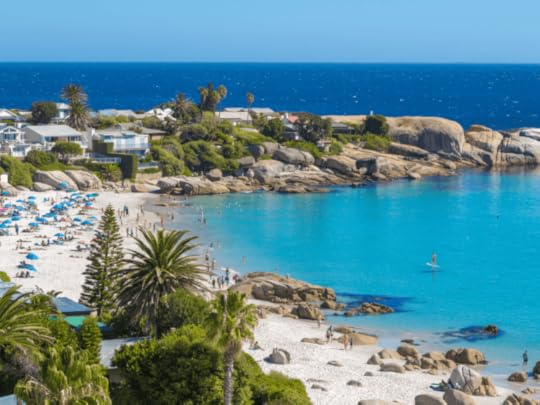 Clifton Beach, Cape Town 9. Impactful volunteer opportunities
Clifton Beach, Cape Town 9. Impactful volunteer opportunities As beautiful and incredible as Cape Town is, you can’t help but notice the massive wealth gap. You can see some of the most impressive mansions in suburbs like Clifton Beach and Rondebosch. Conversely, a short drive away you can find a township of extreme poverty. While most tourists only see the bright side of the city, one of the best things I did while living there was to experience the other side of Cape Town by volunteering in the townships. One of the best things about being a Cape Town digital nomad is you can immersive yourself and participate in the local culture.
I helped entertain kids between the hours they finished school and the time their parents came home. This kept them off the streets, out of gangs, and out of trouble. Another program was supporting grandmothers who were left to look after their orphaned grandchildren after their parents had died from AIDS. The children had hardly anything yet were full of spirit and gratitude which I leaned from. The whole experience changed me and it could for you too.
Need we say more? While there are no wildlife parks inside of Cape Town, just a short flight and weekend away you have some of the best wildlife safaris in the world. Kruger National Park in the country’s northeast is up there with the best. If you wish to go further afield you have Chobe National Park and the Okavango Delta in Botswana to the north. You can also do road trips to game reserves not too far from Cape Town but for the ultimate experience I recommend seeking out one of Africa’s world-famous national parks. Seeing these animals in their natural habitat (not in a zoo) is truly special. Additionally, it helps you understand the importance of combating poaching, wildlife conservation and sustainable travel.
The post Cape Town Digital Nomad: Ten Reasons it Rocks! appeared first on Tim Roberts.
July 3, 2022
How to Build an Emergency Fund on Autopilot

Sounds impossible, right? Well, hear me out, because getting into the habit of shopping for your everyday items in a different way can help you learn how build up a healthy emergency fund without hardly any effort.
Your airline partner can offer you rewards to use for your travels. At the same time, this similar form of shopping can help you build up a buffer in case the unexpected happens. But first…
Why an emergency fund?An emergency fund is for precisely that—emergencies. It’s an account that shouldn’t be touched unless there’s an urgent need to do so. I’m no financial adviser, but I believe you should have an emergency fund set aside before you start investing money elsewhere. I know, doesn’t sound like much fun, but it can be.
What an emergency fund buys you is priceless peace of mind. In his brilliant and best-selling book, The Barefoot Investor, Scott Pape calls this your “mojo account.” By having mojo stashed away, you can have quiet confidence knowing that if the shit hits the fan, you’ve got this.
My mojo account isn’t a bank account but a micro-investing app called Raiz. Raiz is a break-away company from the US app Acorns, which is not yet available in Canada, the UK, or the EU at the time of writing. Raiz is currently available in Australia, Indonesia, and Malaysia, with further plans for expansion.
Note: The same investment strategy for Raiz also applies to Acorns. They both have a similar rewards shopping feature.
Micro-investing on autopilotThese micro-investing apps link to your bank account, debit, or credit card. Every time you purchase something, they round up to the nearest dollar and invest the difference/small change into a fund of your choosing. You hardly notice it as it’s such a small amount—out of sight, out of mind.
Raiz offers three different types of funds, ranging from conservative to high-risk/high-reward. I’m not risk-averse, so I go for risky, which has a 10% weighting in Bitcoin, which has served me pretty well. The idea is to set and forget. Raiz charges me a $3.50 monthly maintenance charge, but I have found the compound interest earned over the long run still makes this worth it.
Acorns Rewards & Raiz Rewards
Raiz and Acorns have their own rewards system. Like the Qantas Online Mall, Raiz partners with countless retailers and service providers. These include:
FashionElectronicsTechnologyFoodTravelInsuranceAccountingDental
And more! You can find just about any product or service that you purchase anyway, so doesn’t it make sense to be rewarded for it?
When you buy through the Raiz Rewards Store, a percentage of your purchase is invested back into your Raiz account. Like the airline shopping rewards, how much is invested depends upon the retailer. They also hold limited-time promotions offering double the investment amount.
How to use Acorns rewardsWhen you open an account with your micro-investing app, deposit $1000 in to kickstart it, if you can. If not, just deposit whatever you can afford. Link it to your spending account or debit card, and then whenever you need to buy something, be it a product or a service, check to see if it’s available through the Raiz or Acorns Rewards store first.
Not only will you get a small portion of your money back and invested for you, the charge from your debit or credit card you used to pay for the item will also be invested. This adds up over the long run, and before you know it, you will have mojo!
Develop a points mindset
Like I said previously, learning how to build an emergency fund (AKA a buffer or mojo) offers priceless peace of mind. But when you’re traveling and living overseas, that peace of mind is amplified by 10. So go ahead and put your buffer on autopilot.
Using reward points has become second nature to me. I hardly ever pay for a product or service unless I’m rewarded for it. This is not being a tight ass, it’s acting smart with my money. I don’t know how much money I’ve saved over the years through reward points, but I do know that I wouldn’t have traveled nearly as much, work from anywhere and had as much fun doing so, without doing so.
The post How to Build an Emergency Fund on Autopilot appeared first on Tim Roberts.
August 30, 2021
How to Overcome Imposter Syndrome

Imposter syndrome is real. Especially when pursuing a new endeavor, or breaking out on your own as a freelancer or entrepreneur. However, the reality is often far different from what’s happening inside your noggin. I remember my first few copywriting jobs. I felt like such a massive fraud. To be fair, I was faking it till I made it at the time, but the inner dialogue was off the charts. And I knew nothing about how to overcome imposter syndrome at work.
I believed that because my client had not gotten back to me with feedback on the copy I had written for a few days, they thought it was awful. I convinced myself they regretted hiring me and would ask for their deposit back. I would continue to do head-miles and decide that I had no talent and they would expose me as a fraud. It would get to the point where I considered quitting my writing dream all-together!
Then, eventually, the client would contact me and apologize for getting back to me so late because they had been busy. They would provide feedback which was no so bad at all, sometimes mostly positive, and I realized that it wasn’t the end of the world after all. It had all been in my head!
It is because of how the imposter has crippled me in the past that compelled me to write this post so I can hopefully help others learn how to overcome imposter syndrome in a new job. But first…
What is imposter syndrome?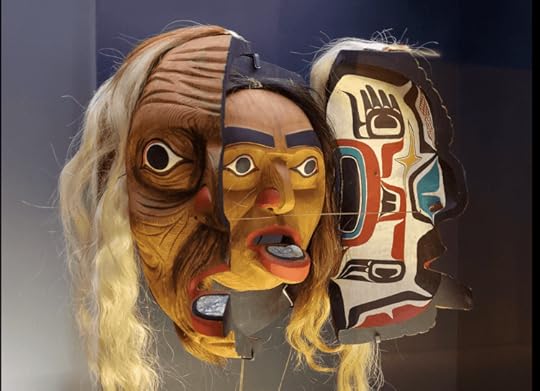
Wikipedia defines imposter syndrome:
Imposter Syndrome is a psychological pattern in which one doubts one’s accomplishments and has a persistent internalized fear of being exposed as a fraud.
The dreaded imposter syndrome can take place at any stage of a person’s career. And it even happens to the best of us.
“I always feel like something of an impostor. I don’t know what I’m doing.” ~ Jodie Foster, two-time academy award-winning actress
Therefore, accepting that it may never completely disappear if you feel Imposter Syndrome is essential. However, you can manage imposter syndrome to prevent the fear and doubts from crippling your work. Most of the freelancers and entrepreneurs I’ve spoken to have admitted to experiencing imposter syndrome, and I’m sure those numbers are significant for imposter syndrome in the workplace too.
So, how do we overcome imposter syndrome?
Imposter syndrome how to overcome Firstly, tell the imposter to shut the fuck up
Firstly, tell the imposter to shut the fuck up You must silence that inner critic in your head before he gets on a roll. I am of the belief; you are what you think.
As soon as you hear that little devil on your shoulder, attempting to fill your brain with fear and doubt, replace it with thoughts that begin with:
I can…I have…And I will…
Better yet, say them out loud. AKA affirmations. It may sound corny, yet affirmations can help change your inner-dialogue. Remember, you are the master of your own mind—no one else. Be sure to let the imposter know who’s boss!
Read my post on mindset and visualization here which can also assist in overcoming imposter syndrome.
Focus on the task at handNot only focus, but pour your heart into the project. One of my favorite quotes comes from Doctor Norman Vincent Peale in his classic book, The Power of Positive Thinking. Peale refers to a coach who gave his trapeze artist student, who doubted making a jump, some words of wisdom.
“Throw your heart over the bar, and your body will follow.”
It means by throwing your heart into whatever you’re doing and having faith, the results will follow. I find it an incredibly inspiring quote that can be applied to any challenging task. Whenever you take on a challenging task, just throw your heart over the bar, love what you are doing and work at it with passion. By doing so, you can rest assured that you did your best.
Listen to your gut - your subconsciousIt will let you know whether you have done the work required. By knowing this, it no longer matters what your client, boss, or critics have to say, as you have a clear-conscious knowing that you put in the effort. And more often than not, you’ll receive positive feedback and a job well done.
And this helps to shrink that little shit of an inner critic for next time
Focus on your winsHave you heard of the term negativity bias? Negativity bias refers to how we can tend to focus more on negative memories than positive ones. I’m sure you can relate now, right? But it’s comforting knowing you are not alone. Most of us tend towards our setbacks and negative experiences rather than our positive ones.
But now that you are knowledge of this, you can become aware and catch your thoughts when they sway towards the negative. And replace those thoughts with a positive experience instead, AKA your wins. Chances are you have more wins to draw upon that failures, you just have to tap into them! The more you practice this, the more natural it will become, leading to a much more overall positive mindset, which the imposter hates!
Treat failure as educationIf you do experience negative feedback, try not to take it personally. Instead, listen to the feedback and take it on board. View feedback as a free lesson on how to learn and grow in whatever profession you are pursuing. Because every mistake you learn from you will become just that little much better and that devilish imposter will become just that little bit smaller.
Remember, you got this!
The post How to Overcome Imposter Syndrome appeared first on Tim Roberts.



